ATP chief dismisses IPTL as "glorified exhibitions" and talks 10-year plan

SHANGHAI, China -- The ATP's executive chairman and president Chris Kermode outlined the details of the organization's 10-year plan and dismissed this winter's inaugural International Tennis Premier League as nothing more than exhibition events in a press conference with reporters at Shanghai Rolex Masters on Wednesday. Roger Federer, Andy Murray, and Novak Djokovic are confirmed to play the team-based league, which runs from November 28th to December 13th in Asia.
Kermode was asked whether the ATP was worried about the league, which has some people concerned that it could lead to fatigued players when the ATP season kicks off again on January 5th. Players have complained for years that the ATP and WTA seasons are too lengthy and the tours have done their part to condense them. Now, the players are voluntarily flying to Asia to compete just weeks before the regular season starts in exchange for a paycheck.
"There have always been exhibitions," Kermode said. "There always will continue to be exhibitions. I think what has caused this to be an issue is the word 'league.' This is just a series of glorified exhibitions. I actually don't have a problem with it. It's very light entertainment. It's no problem that players can go and play in it. They're not going to be playing at 100 percent."
American Jack Sock reflects on his upset over Kei Nishikori in Shanghai
Mahesh Bhupathi, one of the men behind the new league, told The New York Times in 2013 he envisioned the IPTL as a truly competitive endeavor. Murray, whose management team now includes Bhupathi, said he expects the teams to play to win and not just to entertain.
"I think it is going to be kind of different to exhibitions because I think the owners of the teams will be wanting the players to play properly," Murray said. "They want the players to play a high level and to try to win. They're obviously investing a lot of money in it. Whereas I would say an exhibition the result isn't necessarily the most important outcome. It's about entertaining people."
The league is comprised of four teams in Manila, Singapore, New Delhi, and Dubai. A slew of top names have signed on, including Serena Williams, Maria Sharapova, Eugenie Bouchard, Gael Monfils, Jo-Wilfried Tsonga, Pete Sampras, Caroline Wozniacki, and Ana Ivanovic. Much like World Team Tennis, the format revolves around singles, men's doubles, mixed doubles and legends, with each "match" lasting just one set.
"It will be interesting to see how it goes," Murray said. "You never know how first time events are going to go. But with the players they have involved in it, you would expect it to be a pretty fun experience for anyone that's going to watch."
Here are the highlights from Kermode's discussion of his 10-year plan for the ATP:
• Kermode wants to pump more money into the ATP Challenger circuit but emphasized that players shouldn't be able to make a living there:
"We need to define what ranking the ATP feels it is responsible for an ATP player to make a living," Kermode said. "What is that ranking number. Once you pick that number, you then define what making a living is. Obviously, depending on where you come from in the world, people's view of what making a living is very different.
"I never want [Challengers] to be sort of a separate tour, where someone can earn a living for the next eight years playing challengers. It is meant to be a stepping-stone for players, coming through the ITF futures. It's almost like a university progression. You play your challengers, then you go on to the World Tour. It's meant to be a feeding mechanism, not a place where someone can earn a living."
The Evolution of Tennis Fashion: Rafael Nadal
2003
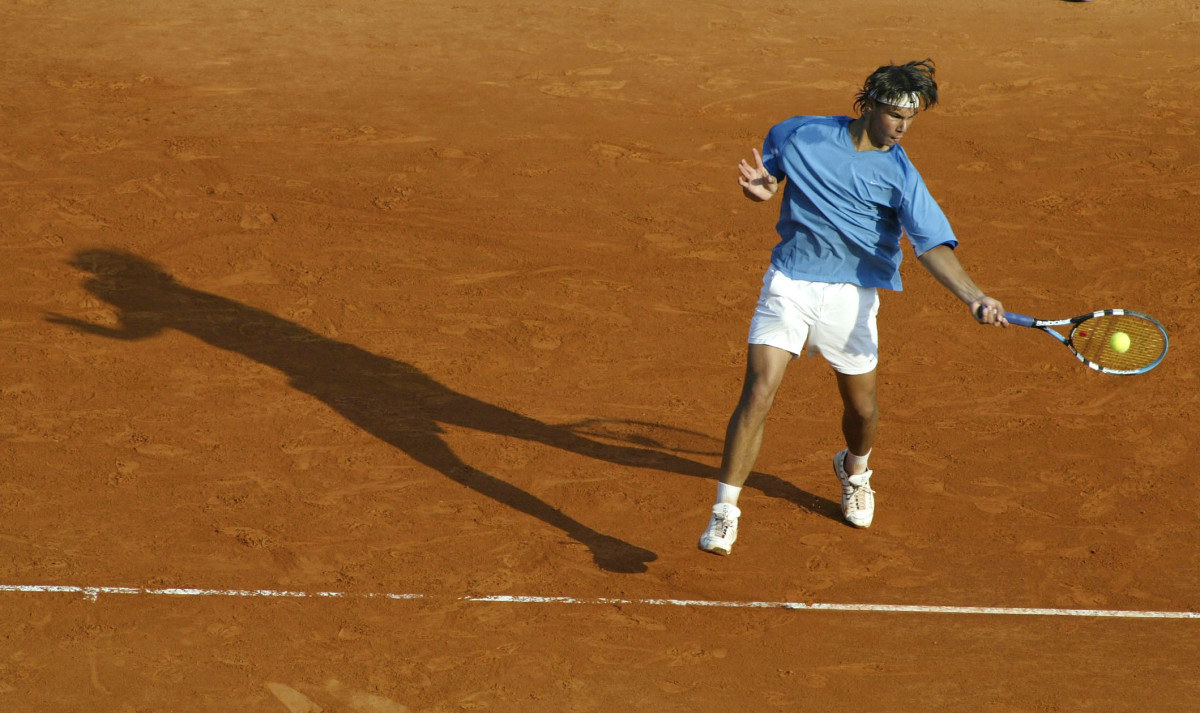
Here's 16-year-old Nadal, sporting his short-shorts and incredibly baggy T-shirt. Do those sleeves cover his elbow? Yes, they do.
2003
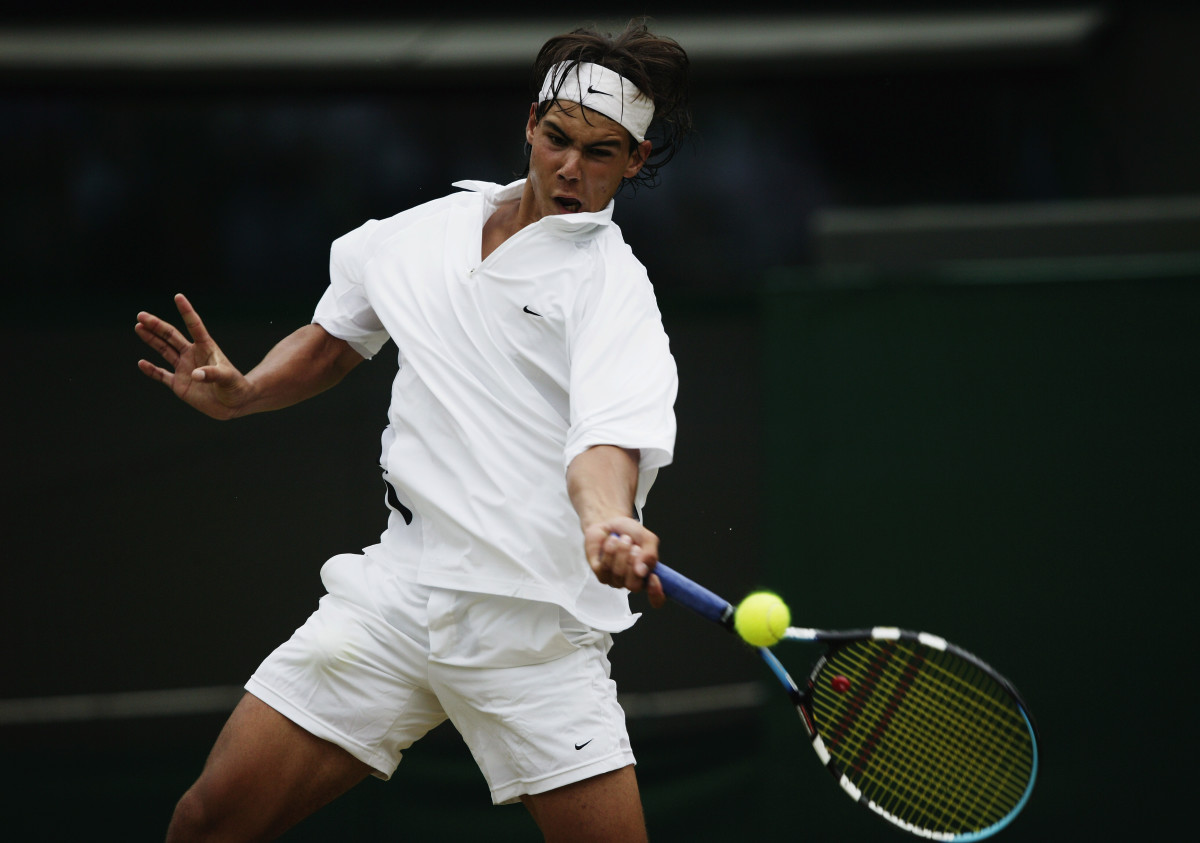
Still swimming in shirts -- and he wasn't the worst one at the tournament.
2003
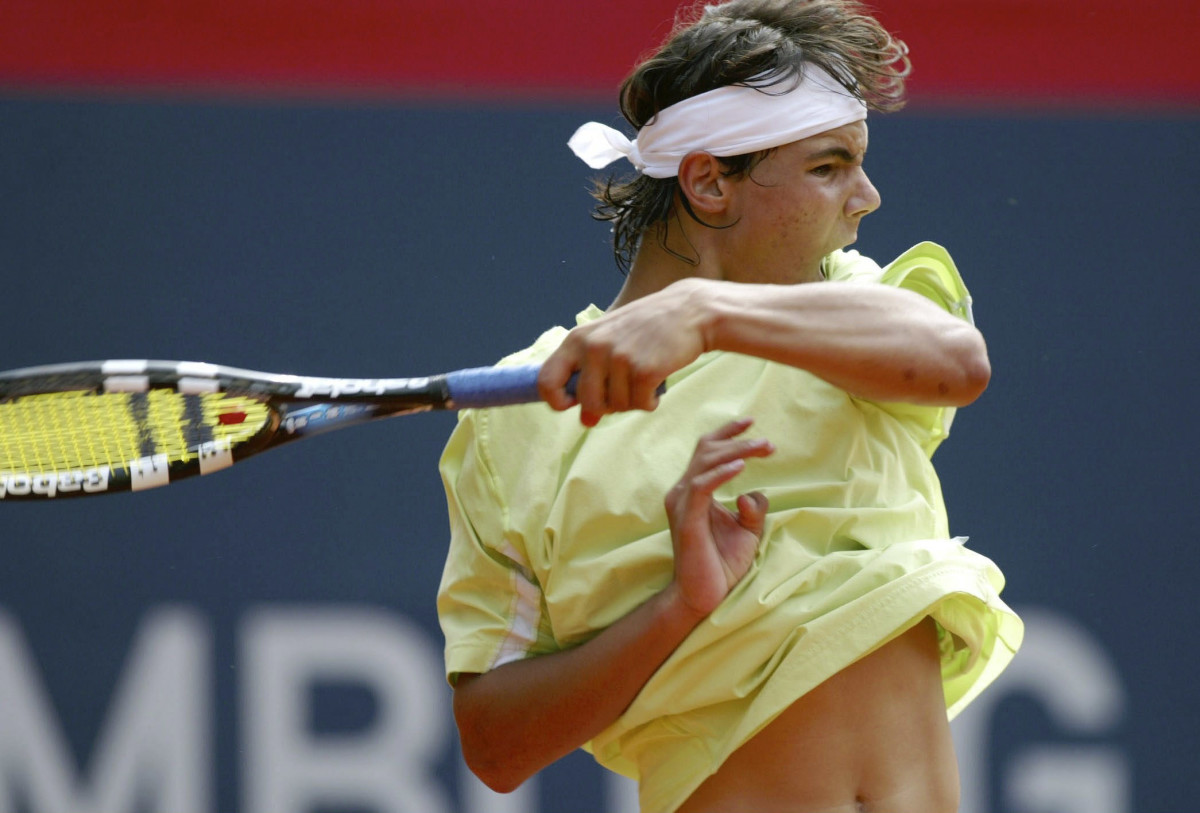
Nadal's billowing shirt -- in a new, lime-green color -- makes it easier for torso exposure during the match.
2004
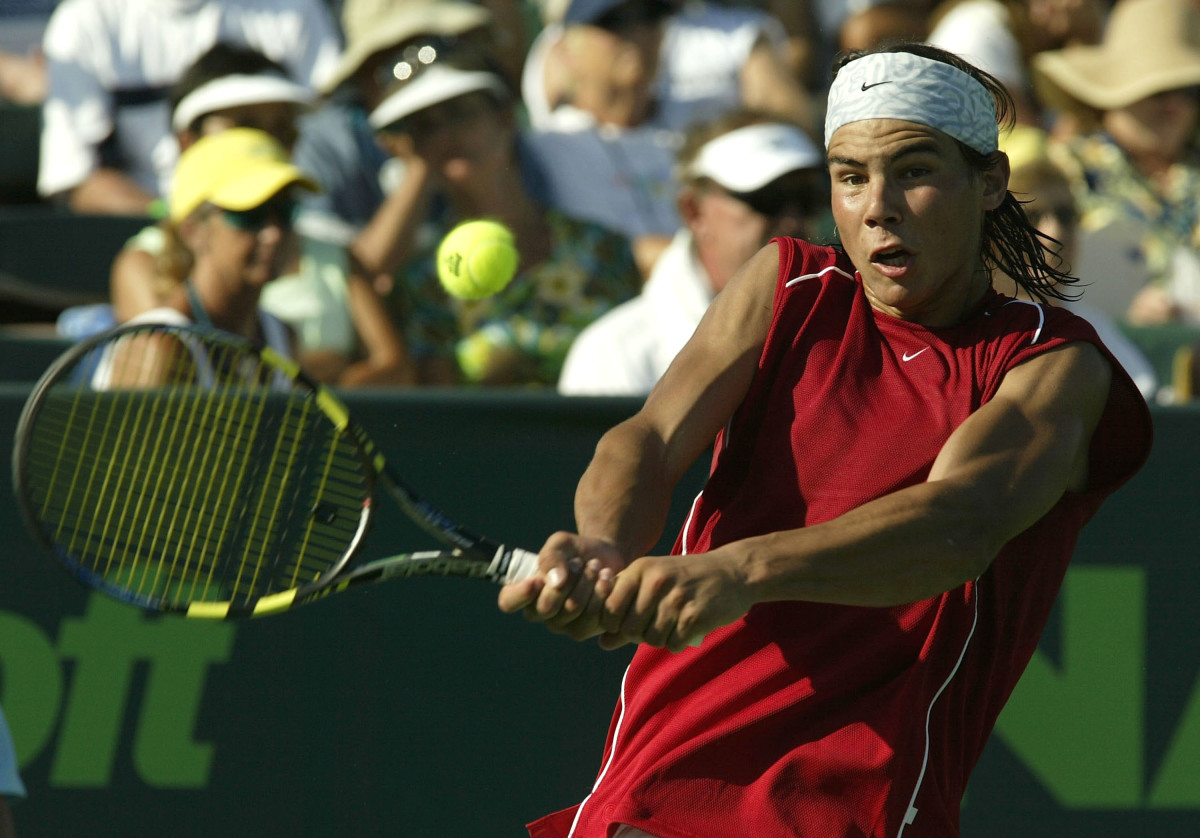
Still sticking with the white headband, Nadal finally opts for a better-fitting top.
2004
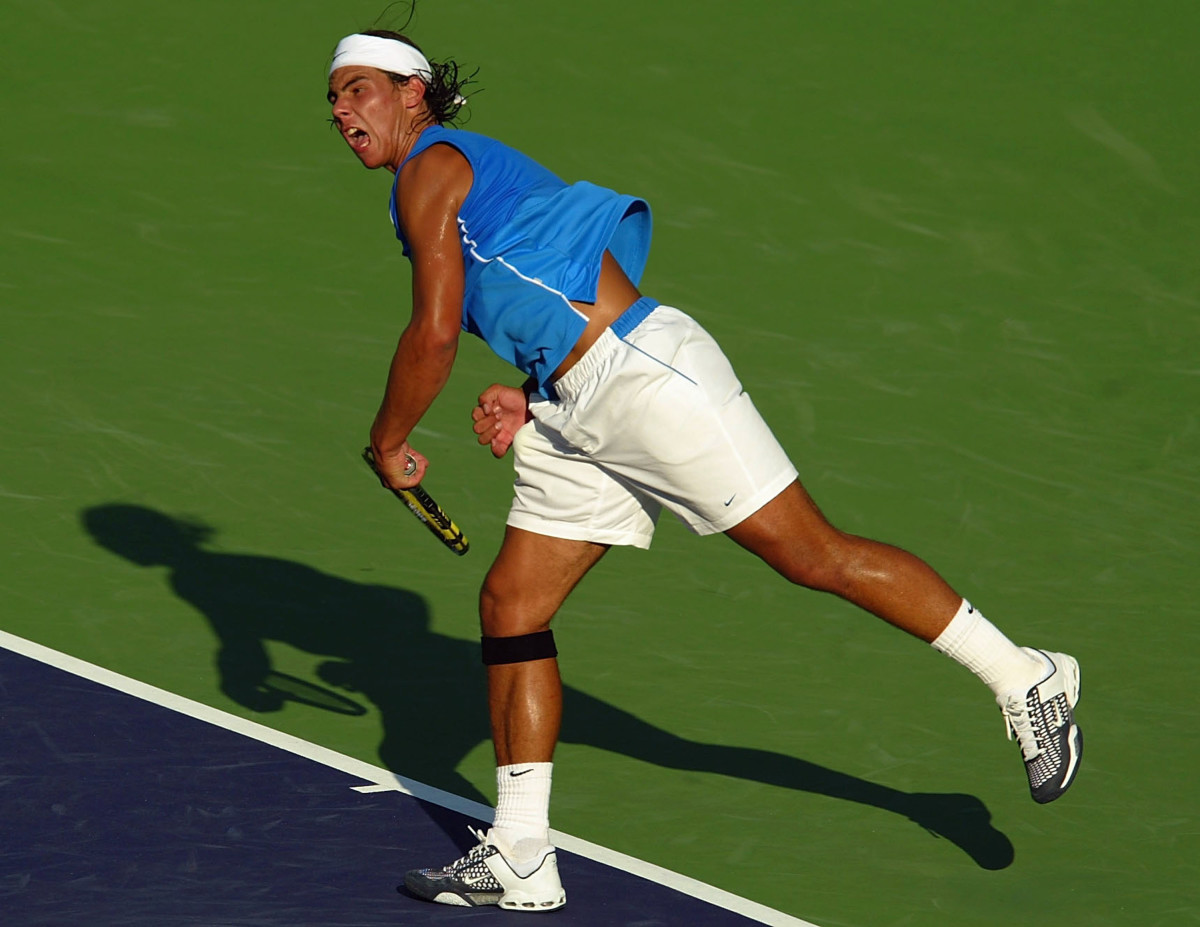
Nadal continues the aggressive look of his soon-to-be signature sleeveless shirt and makes his transformation into a style icon.
2004
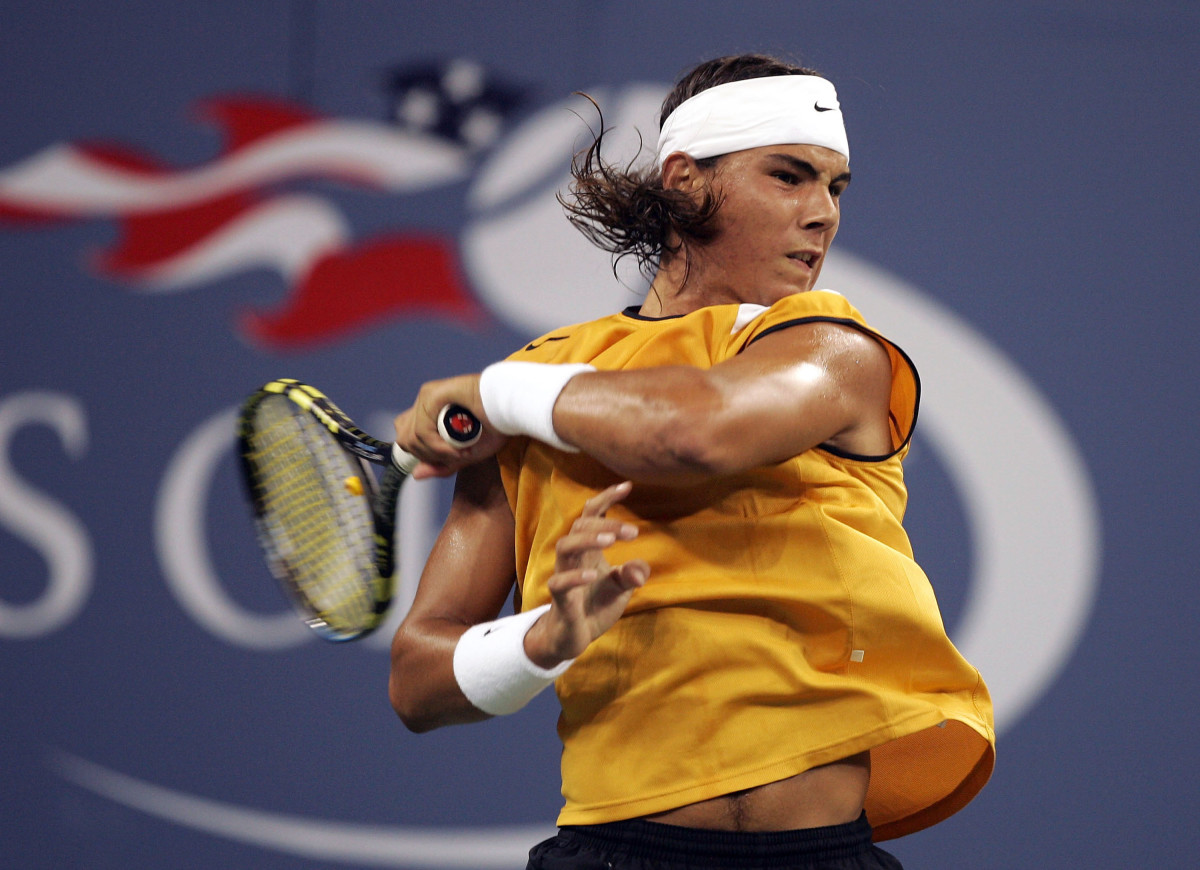
A mustard yellow sleeveless top and thick, white wristbands for New York.
2005
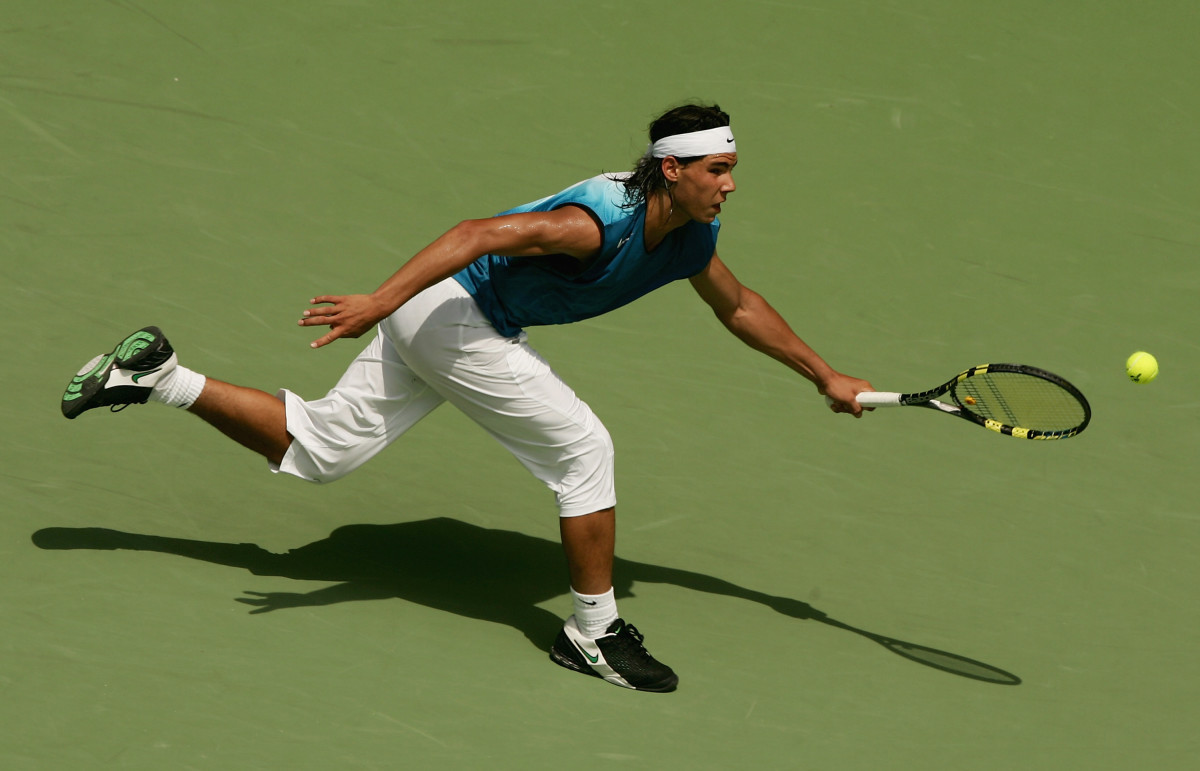
The addition of his "piratas" marked the birth of Nadal's trademark look: sleeveless tops and capri-length pants.
2005
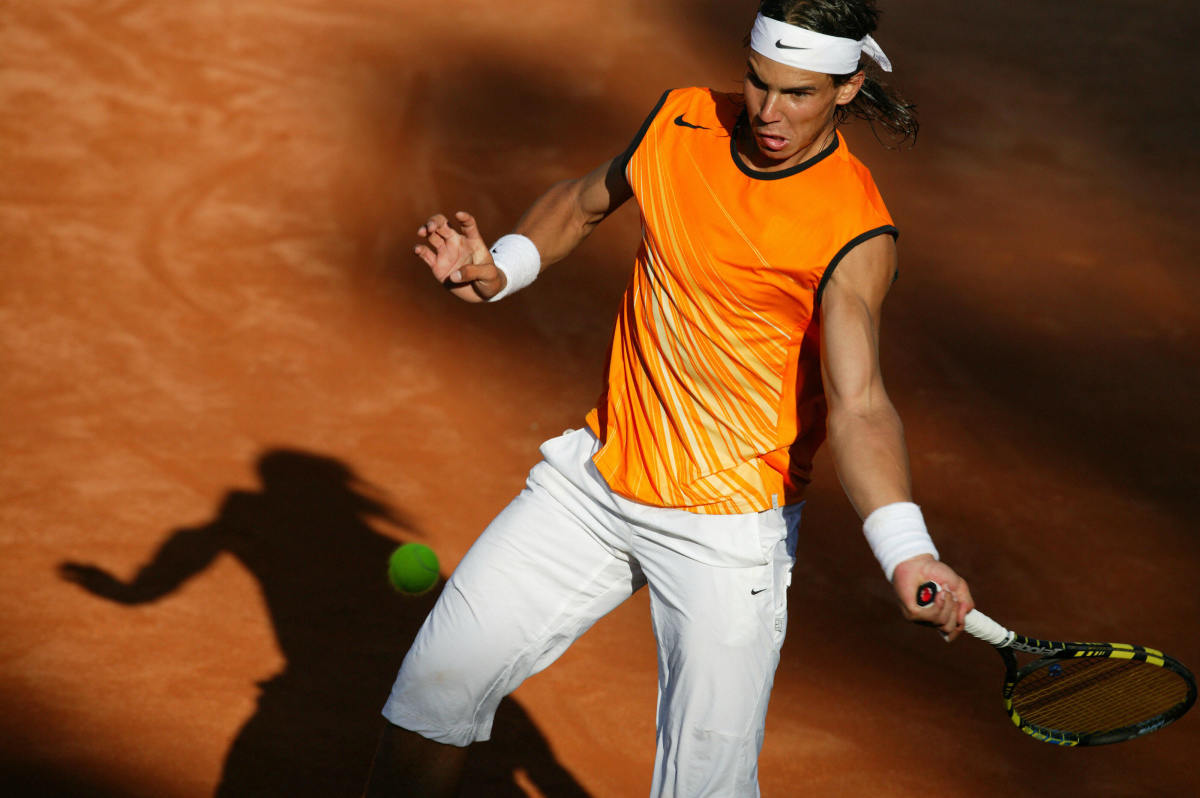
The beginning of Nadal's love for orange, and Nike's love for waved, two-toned designs.
2005
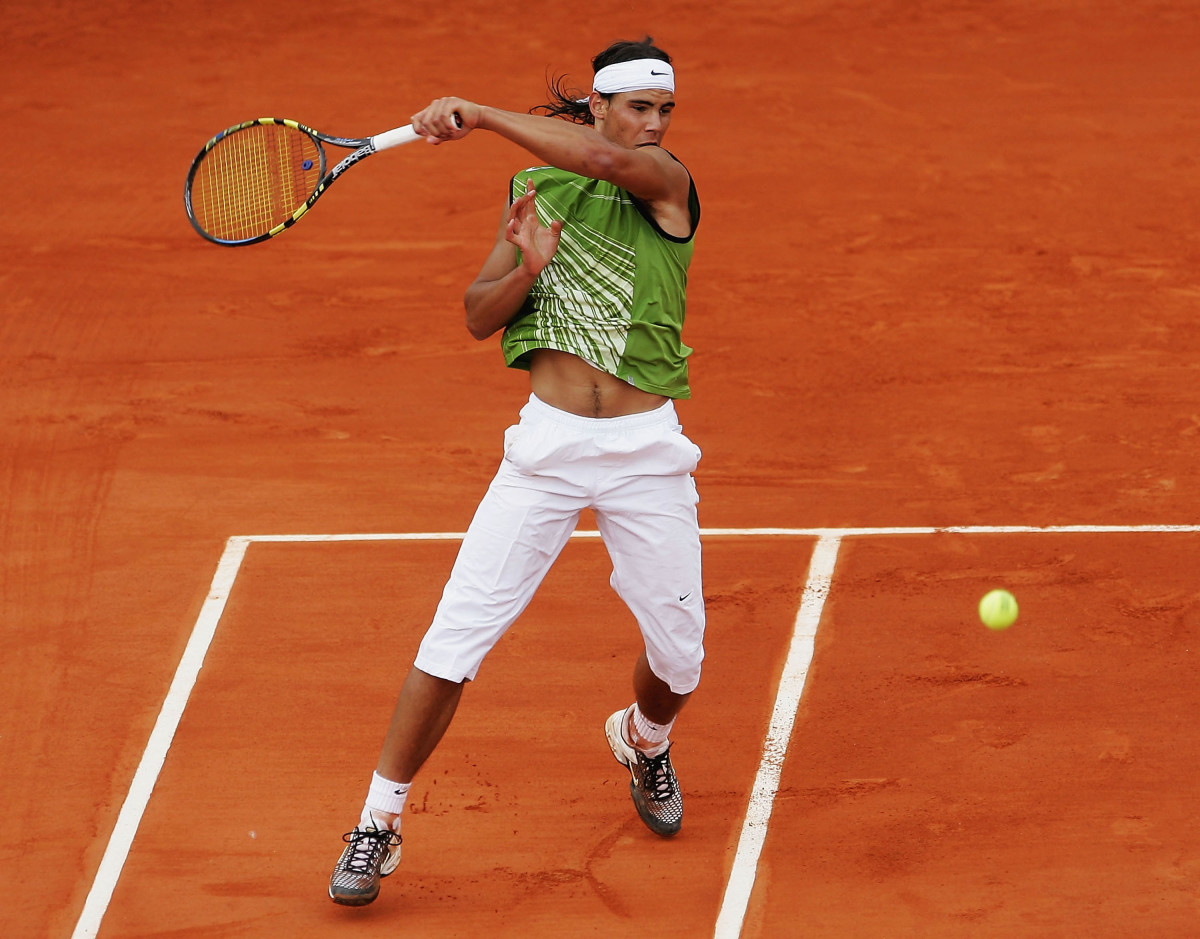
Nike put a green-spin on Rafa's signature style just in time for his maiden Grand Slam title at the French Open.
2005
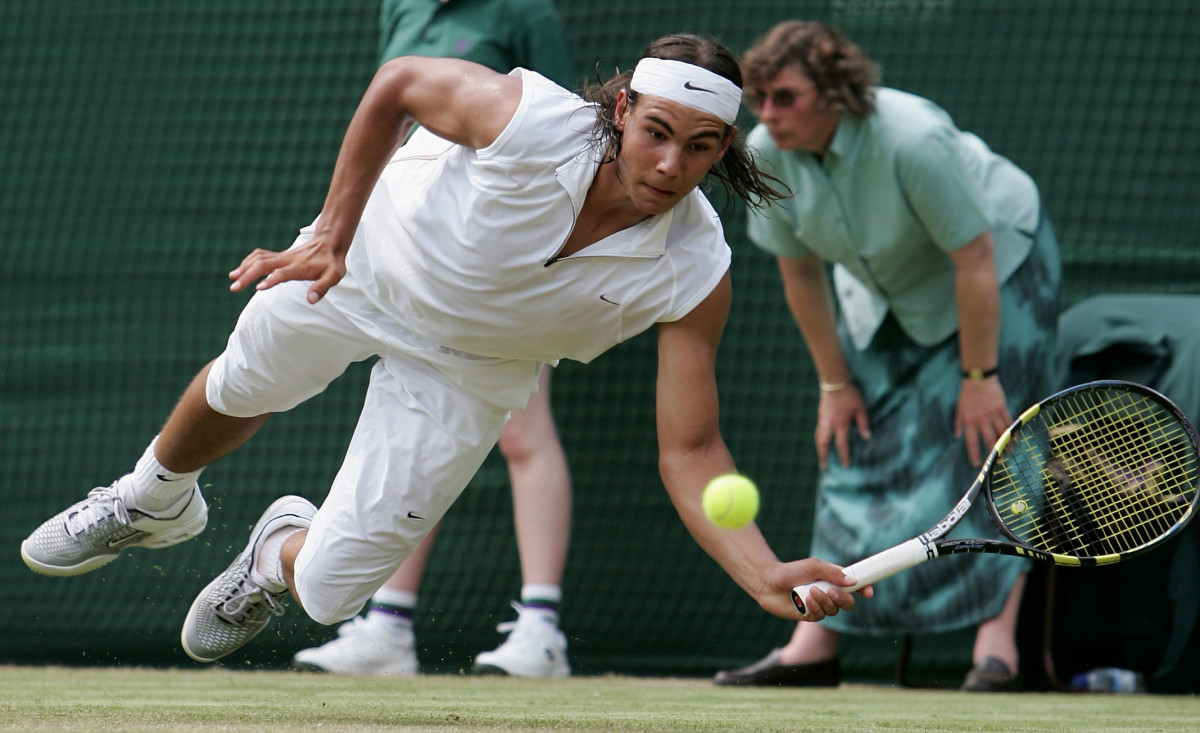
Rafa went with an all-white, collared and quarter-zip version of his sleeveless top for the All England Club.
2005
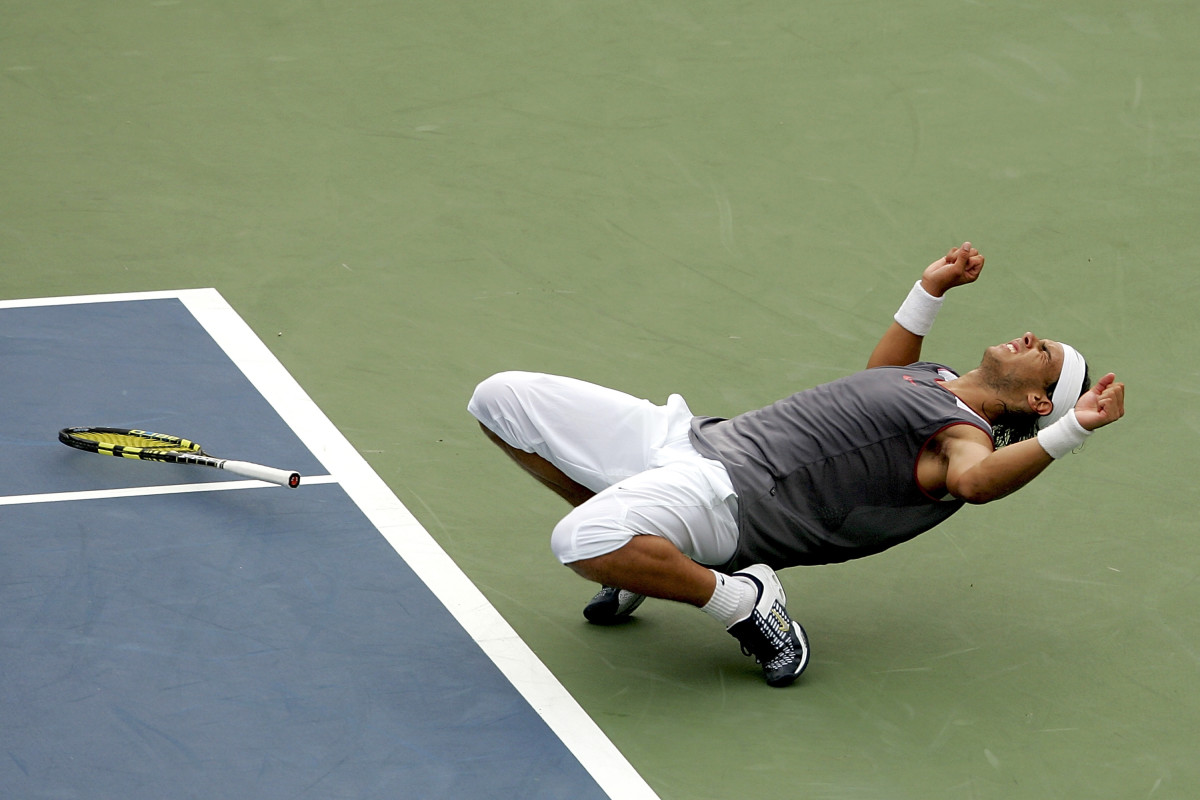
Nadal sported a rare monochrome top for his win over Andre Agassi in the final of the Rogers Cup.
2005
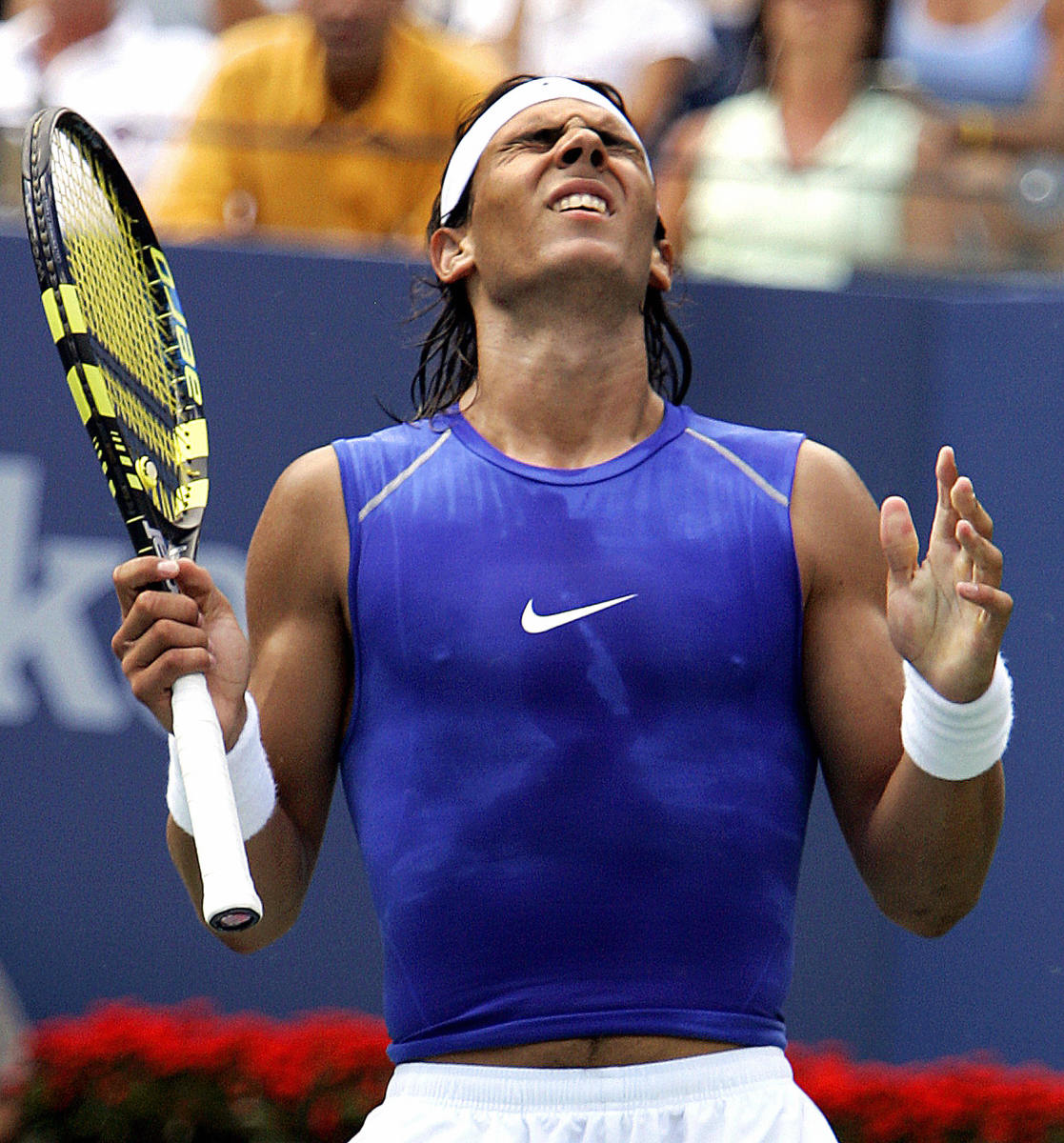
This skin-tight, sleeveless crop top was a one-time wonder at the U.S. Open, after Nadal lost in the third round.
2006
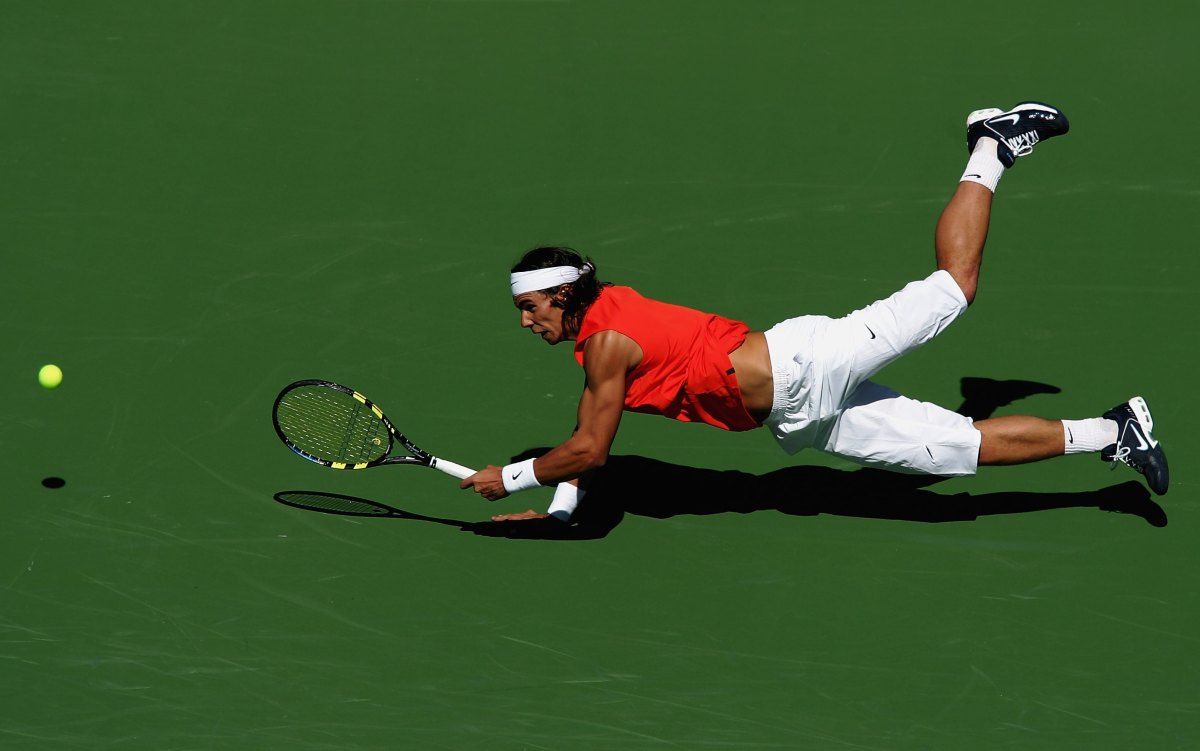
Back to orange -- and a distinctive Nadal dive -- at Indian Wells.
2006
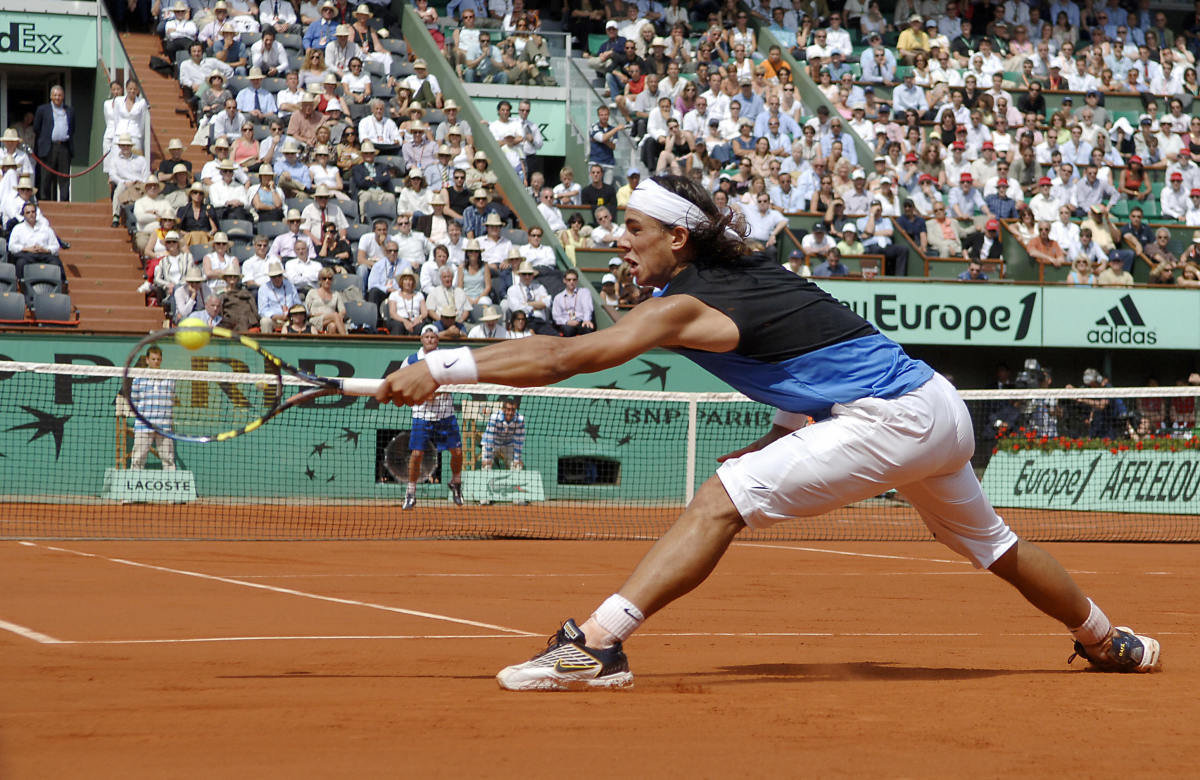
Nike went with a two-toned sleeveless top for the French Open. Black in the back...
2006
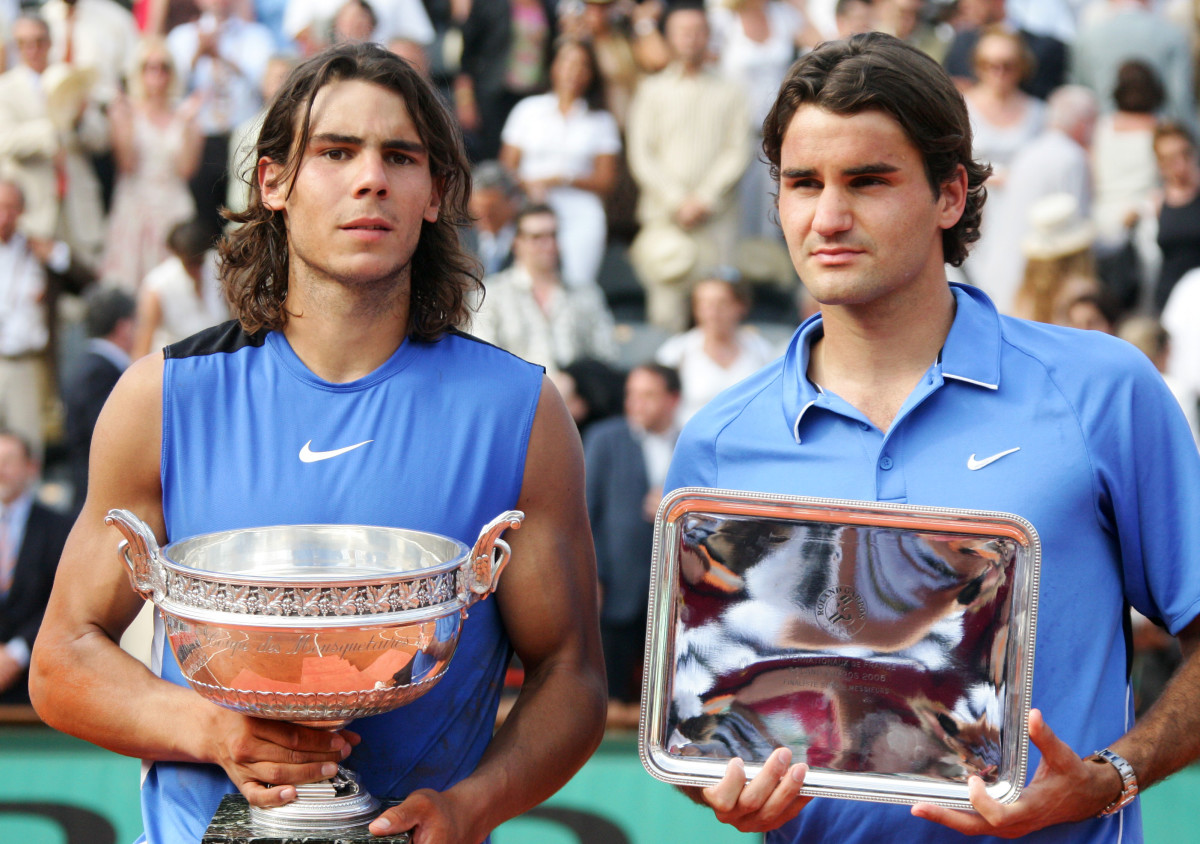
...and Roger Federer-matching blue in the front. And with that, never again did Nike try to make two kits out of one swath of fabric for its two male stars.
2006
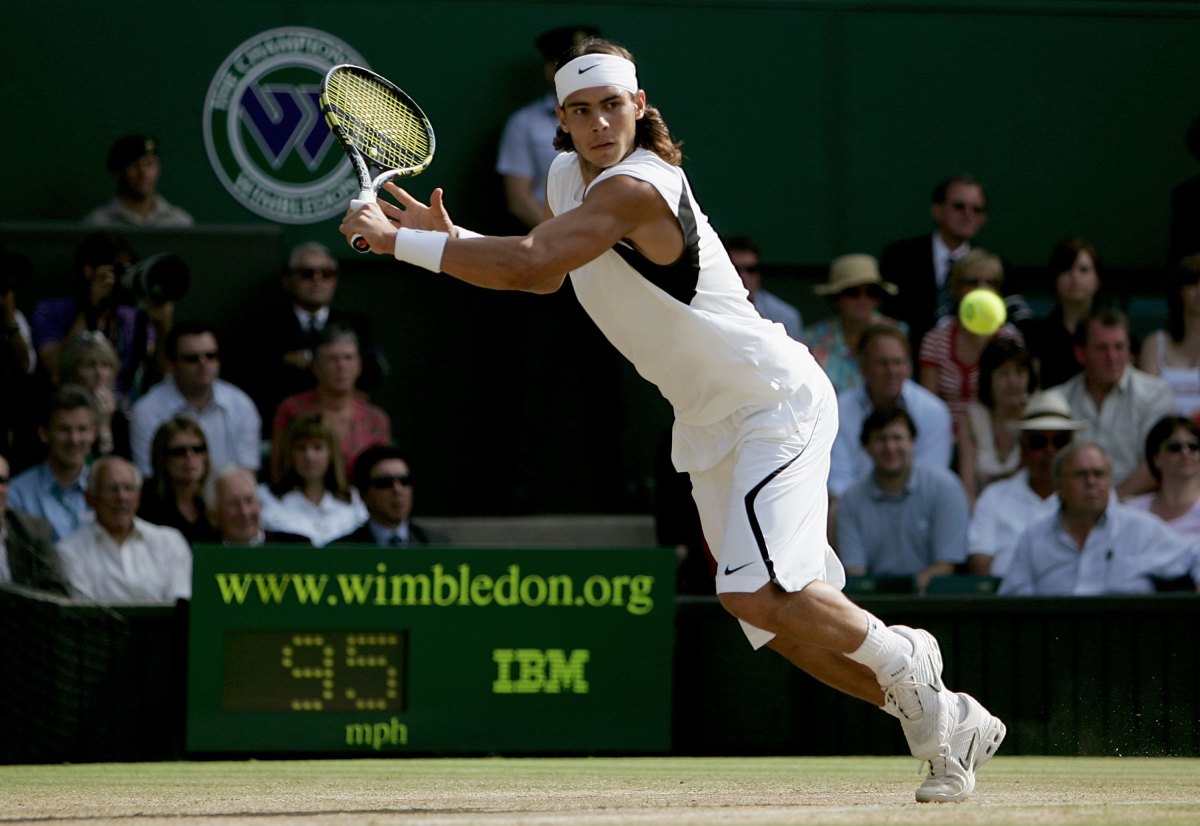
Rafa looks sleek and sharp in his Wimbledon whites, adorned with strokes of black.
2006
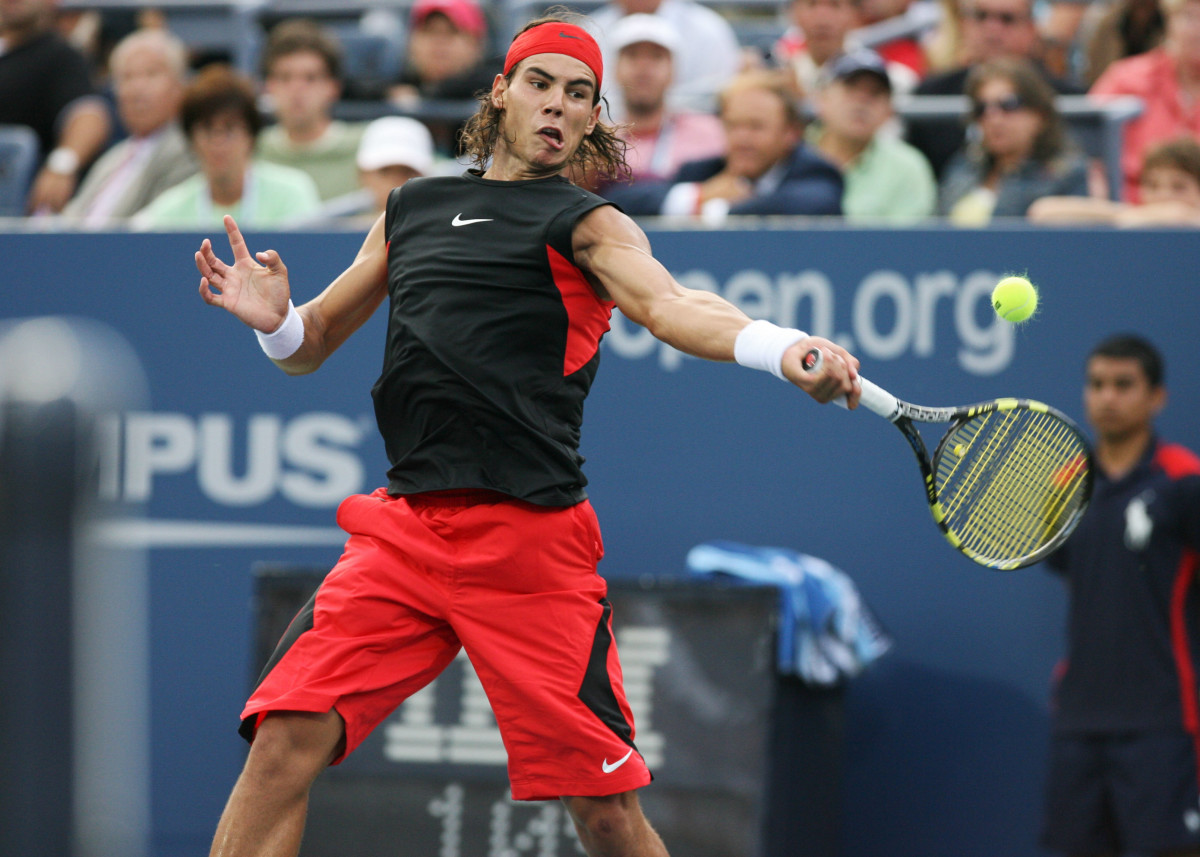
Nadal got a brief respite from his capris with these long shorts for the summer. (He lost to Mikhail Youzhny in the quarterfinals at this U.S. Open.)
2006
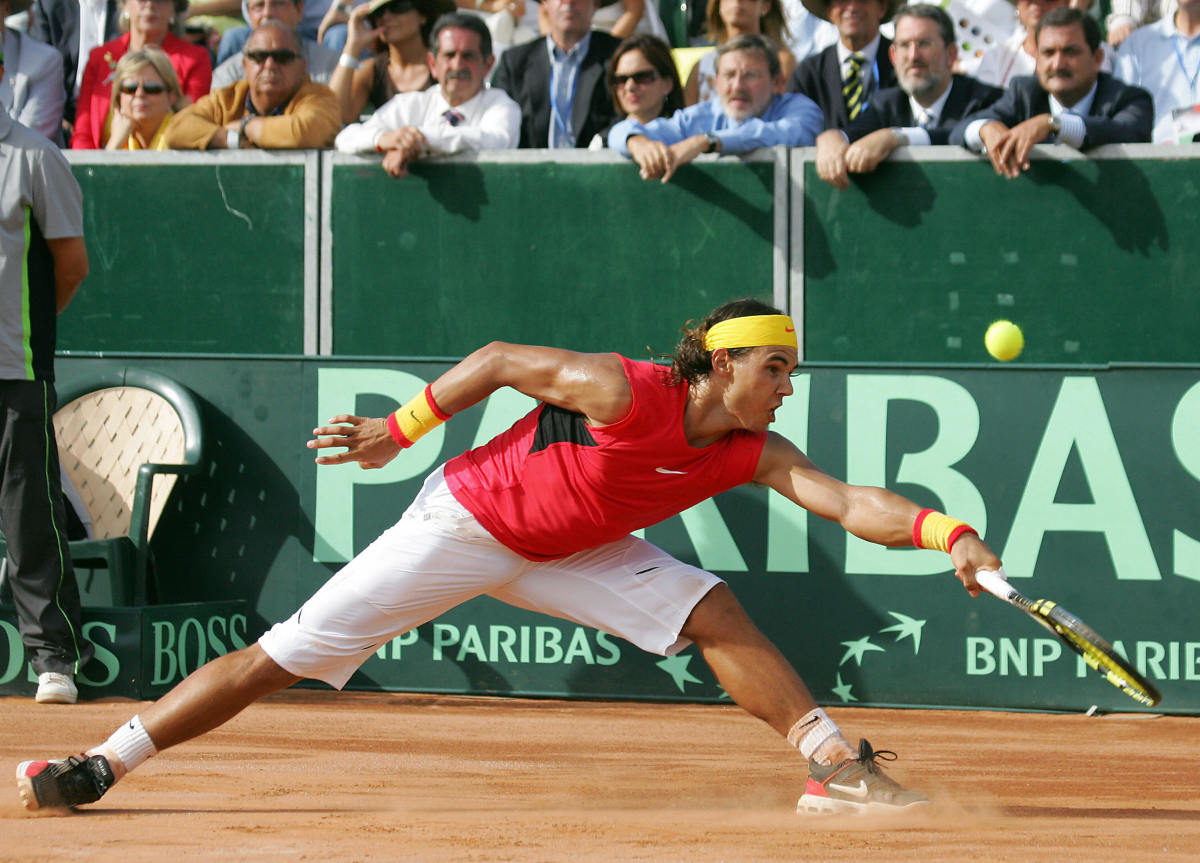
Nadal embodies his country's colors with this red and yellow ensemble as he represented Spain at the Davis Cup.
2007
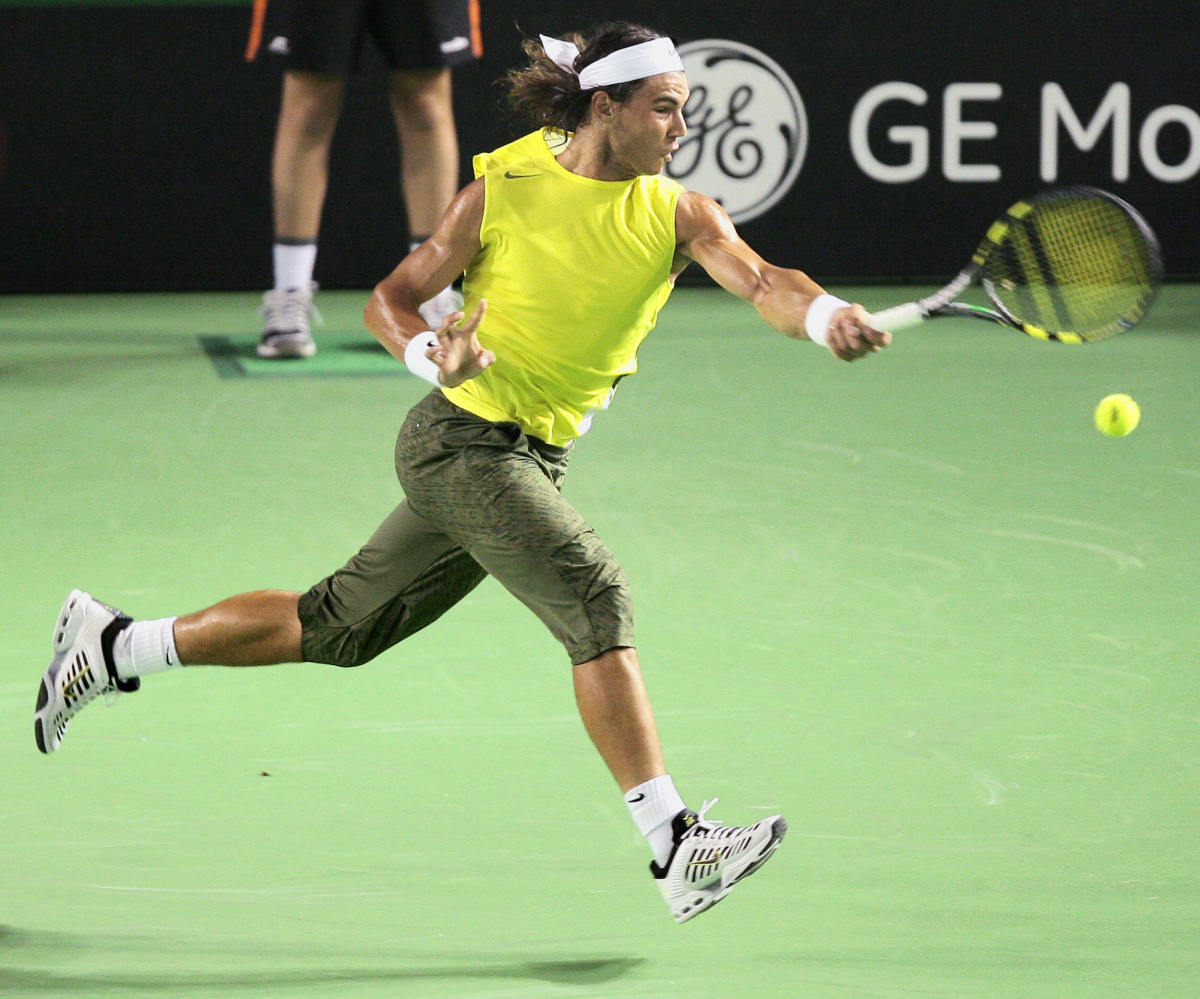
Back to the piratas, looking like a man prepared to hit the Australian Outback.
2007
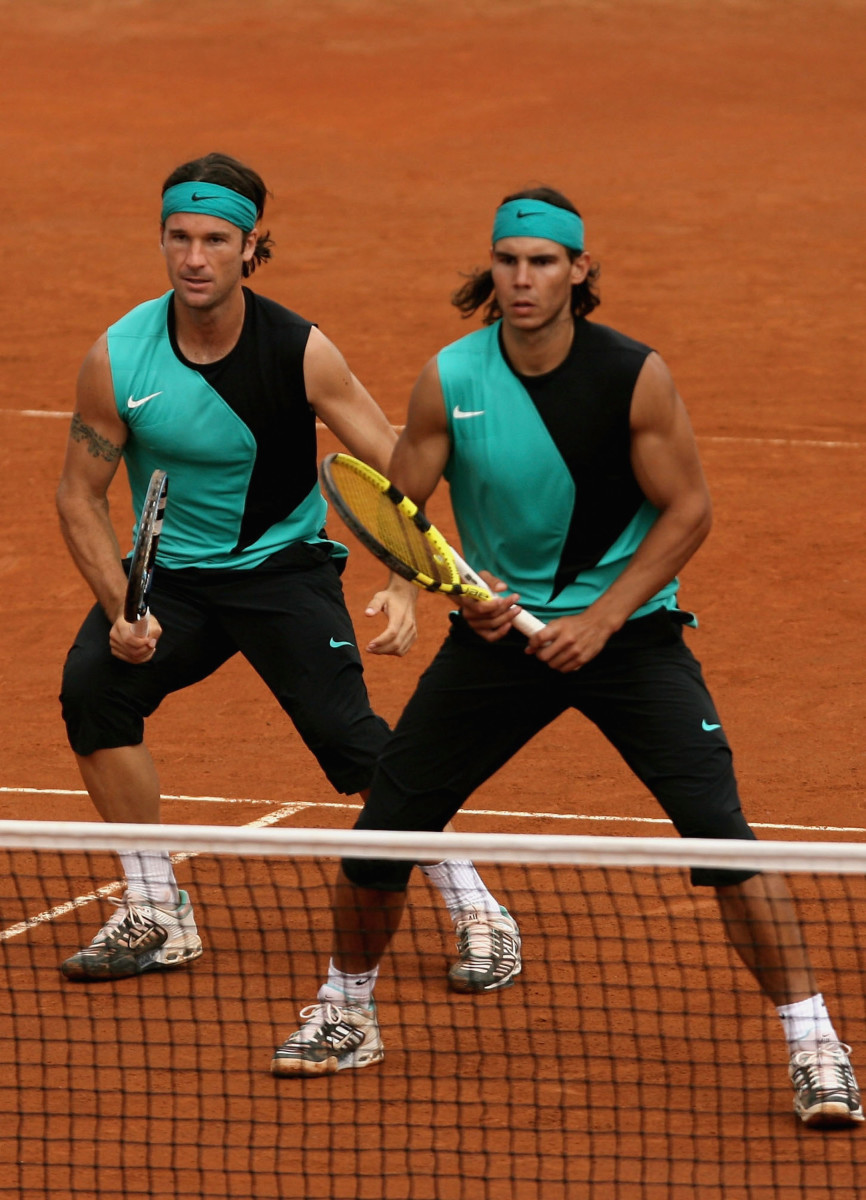
Pirata twinsies!
2007
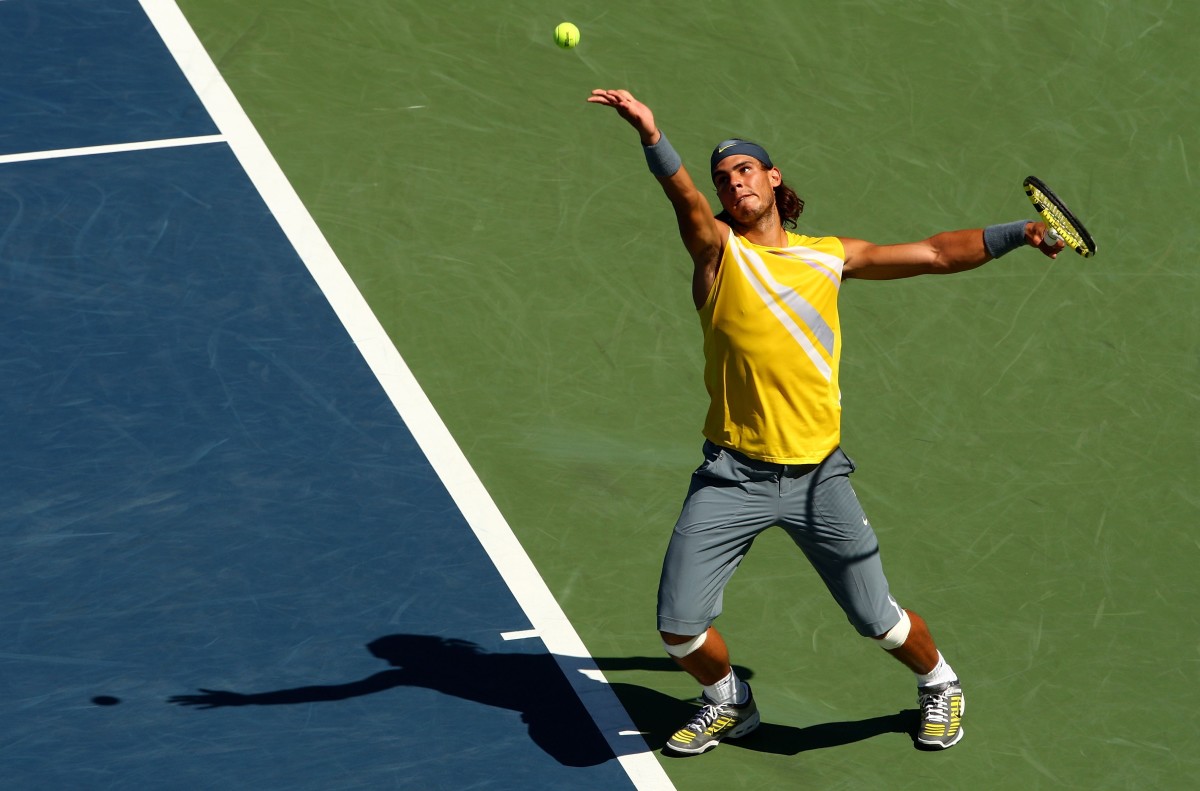
At this point it became clear that while Nike would kit Roger Federer out in conservative solid colors, Nadal was going to get the bold neon colors.
2008
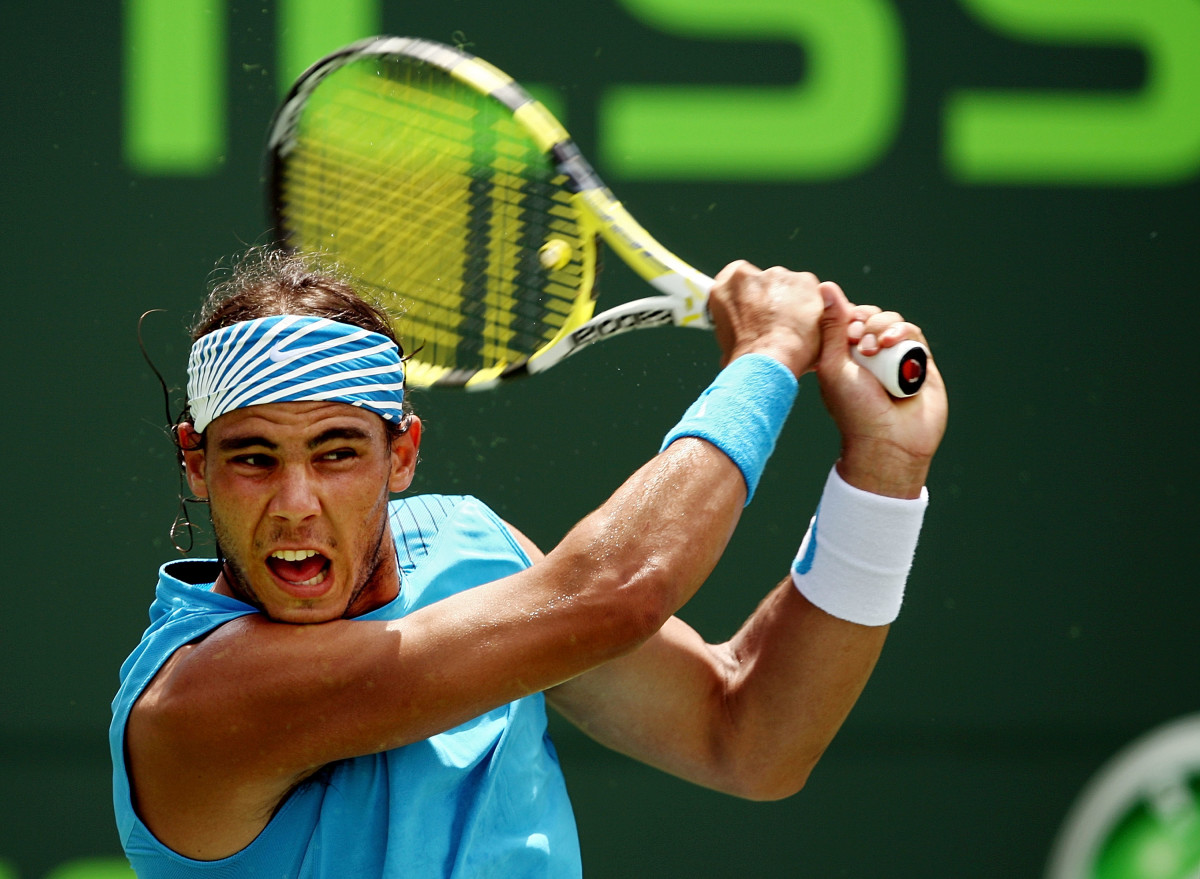
Nadal in Karate Kid patterned headbands? No.
2008
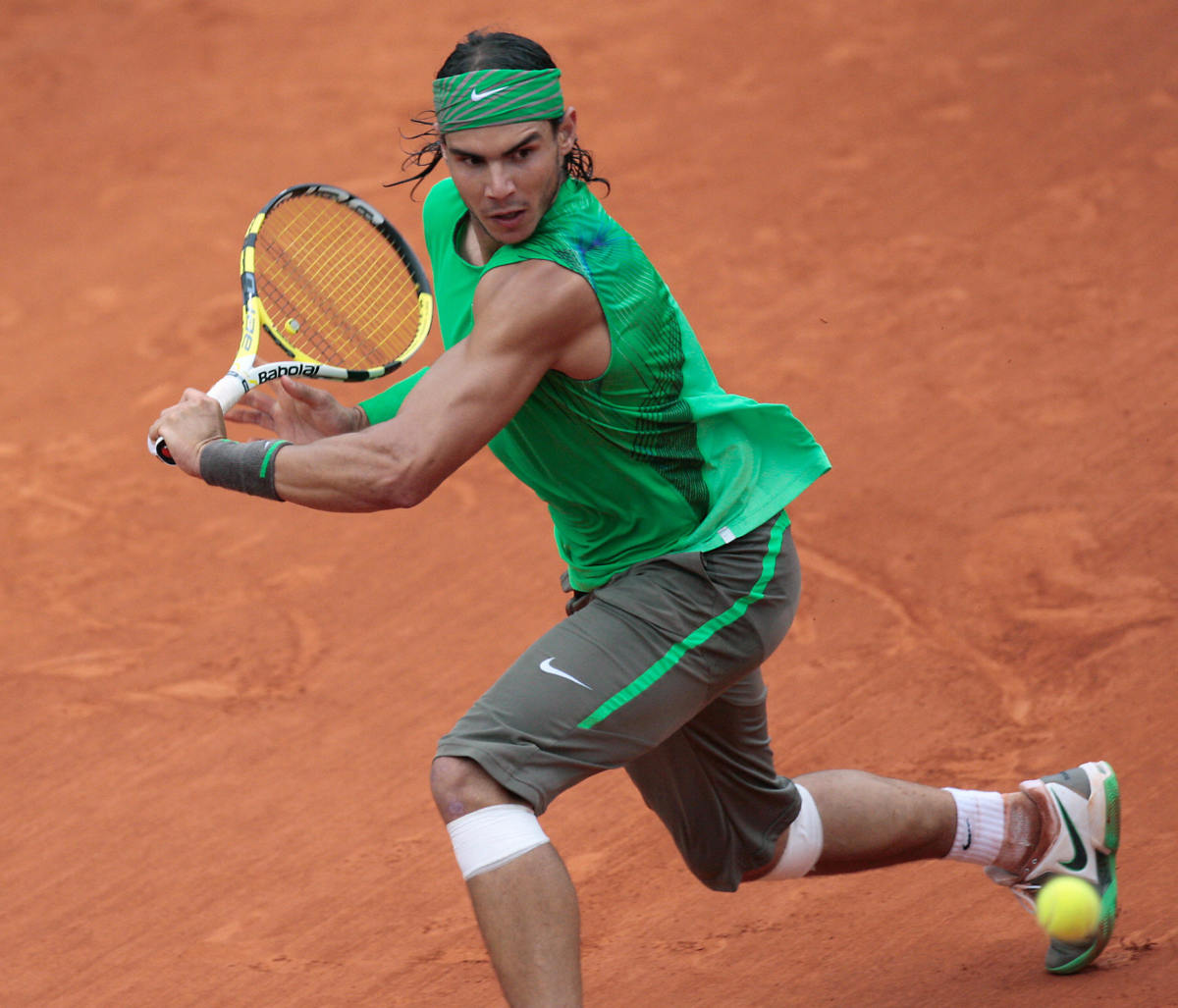
Nadal goes green in his 2008 French Open winning kit.
2008
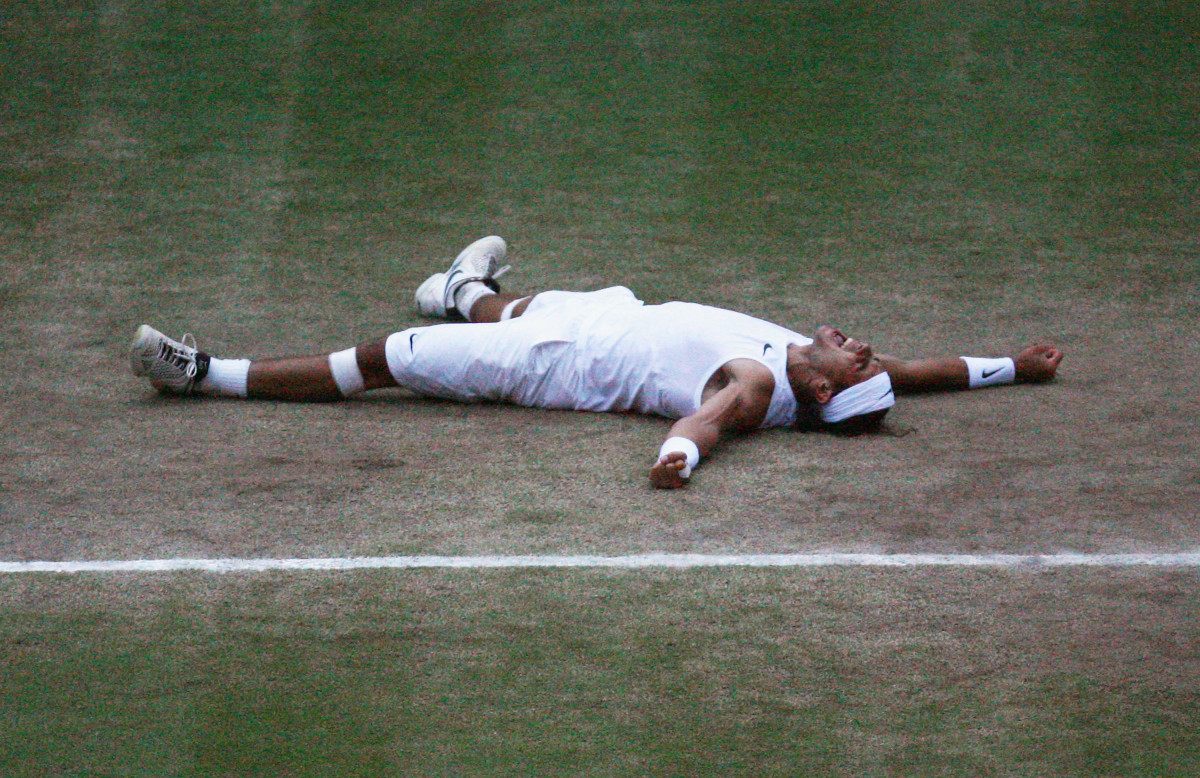
Greatest match of all time = Greatest kit of all time? Is that how it works?
2008
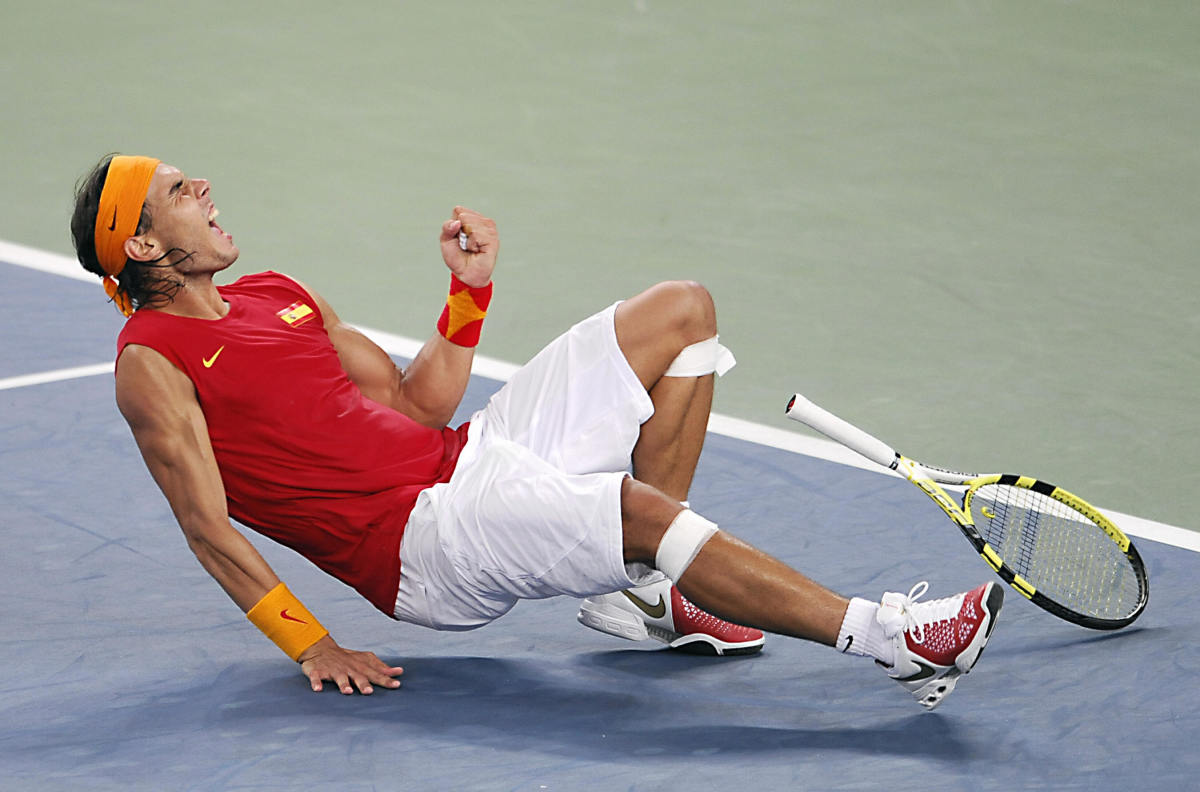
The orange headband and wristbands were odd, but Nadal's Spain kit was worthy of a gold medal in Beijing.
2008
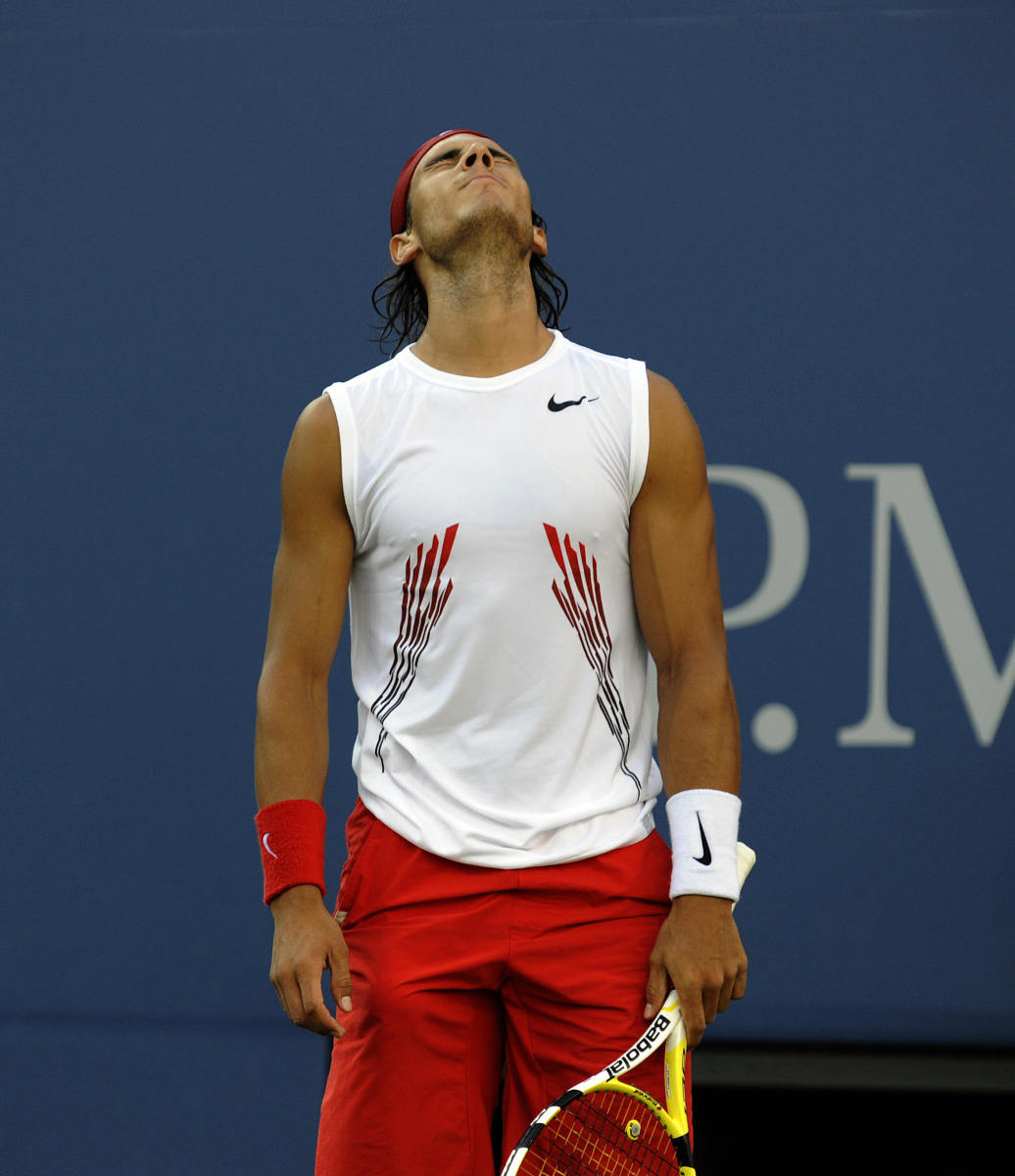
Nike's insistence on putting random patterns on Rafa has always been a head-scratcher.
2009
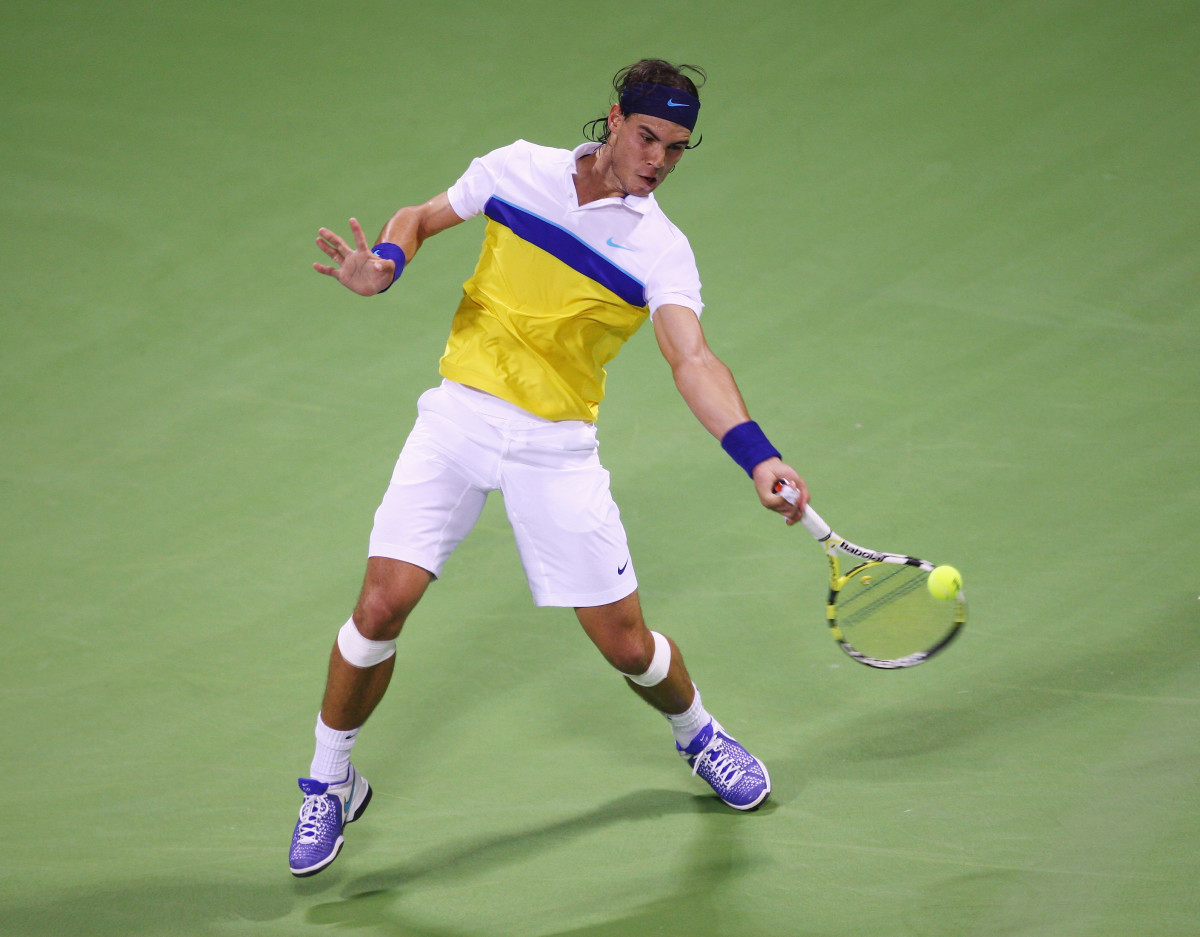
Nike finally goes with a polo shirt with sleeves. And thus begins the fashion maturation of Rafa Nadal.
2009
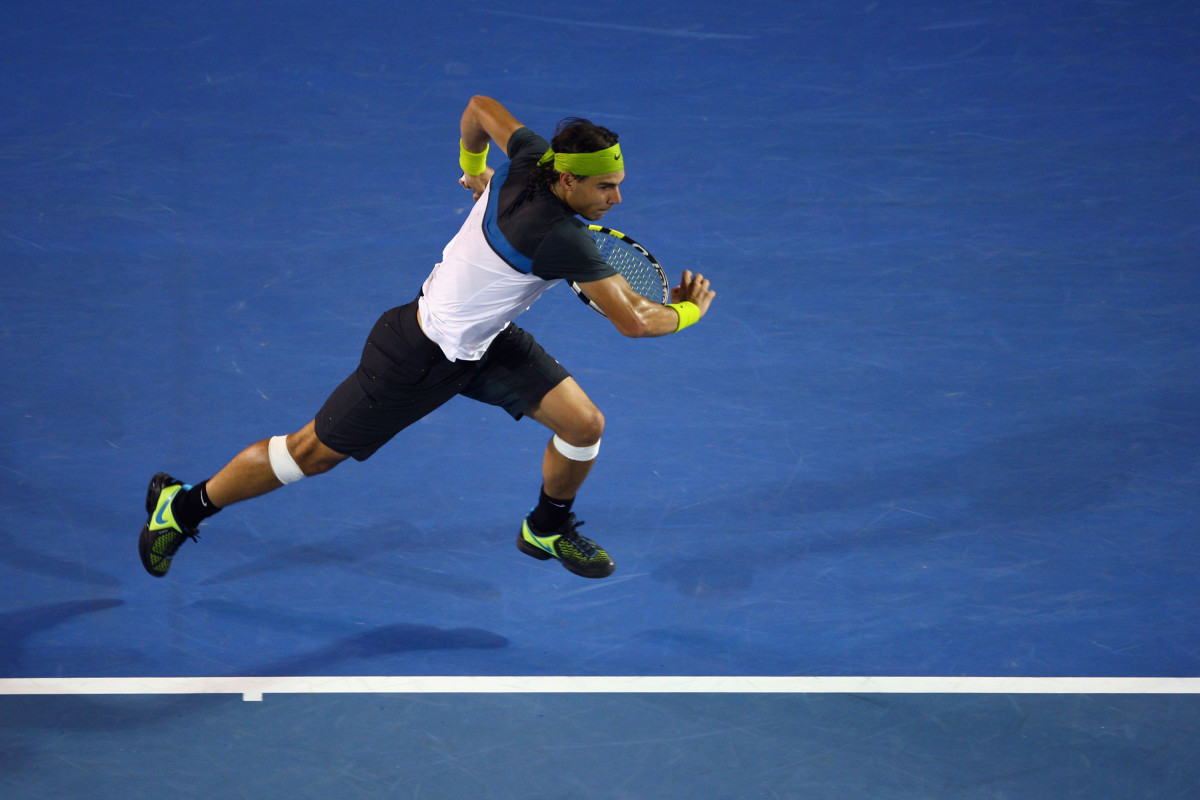
An underrated kit. Simple, clean, but still fun.
2009
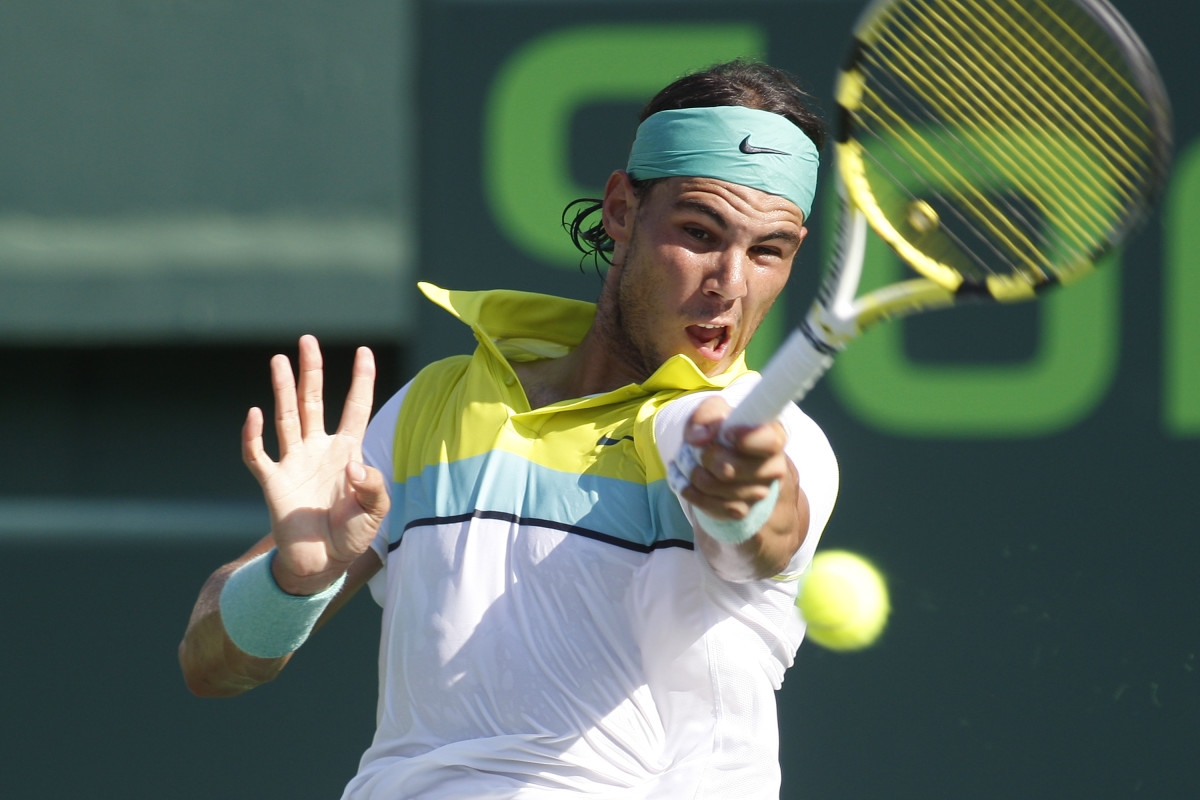
At this point it became clear that collars were not going to work on Rafa.
2009
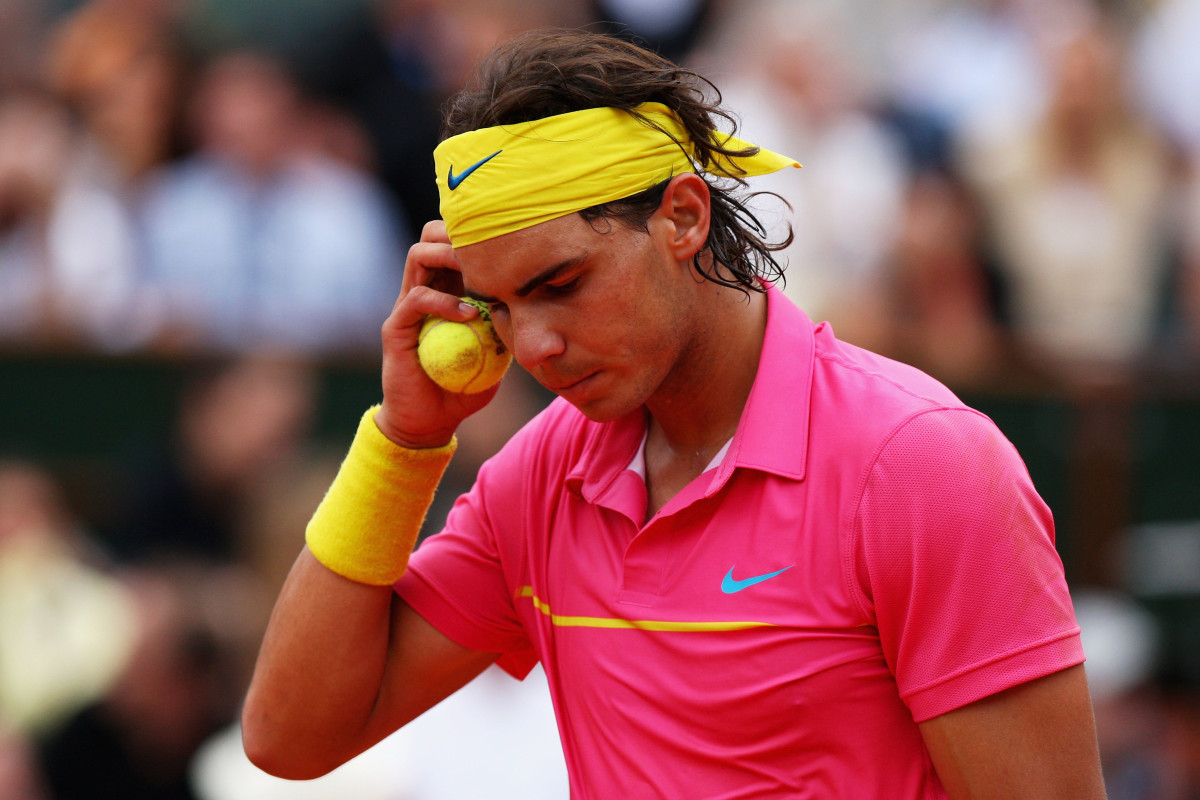
Nadal's only loss at Roland Garros came in this garishly-pink collared shirt. Not a trophy-worthy look.
2009
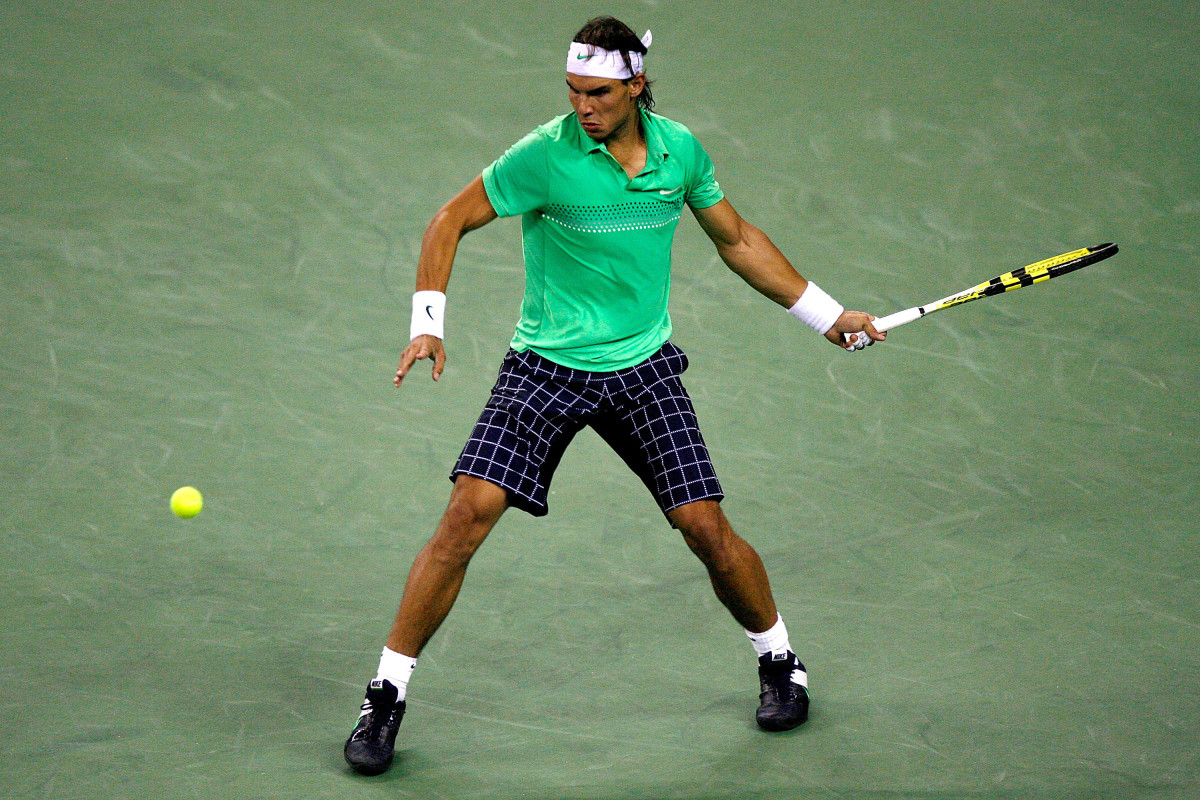
Patterned shorts. Let's not.
2010
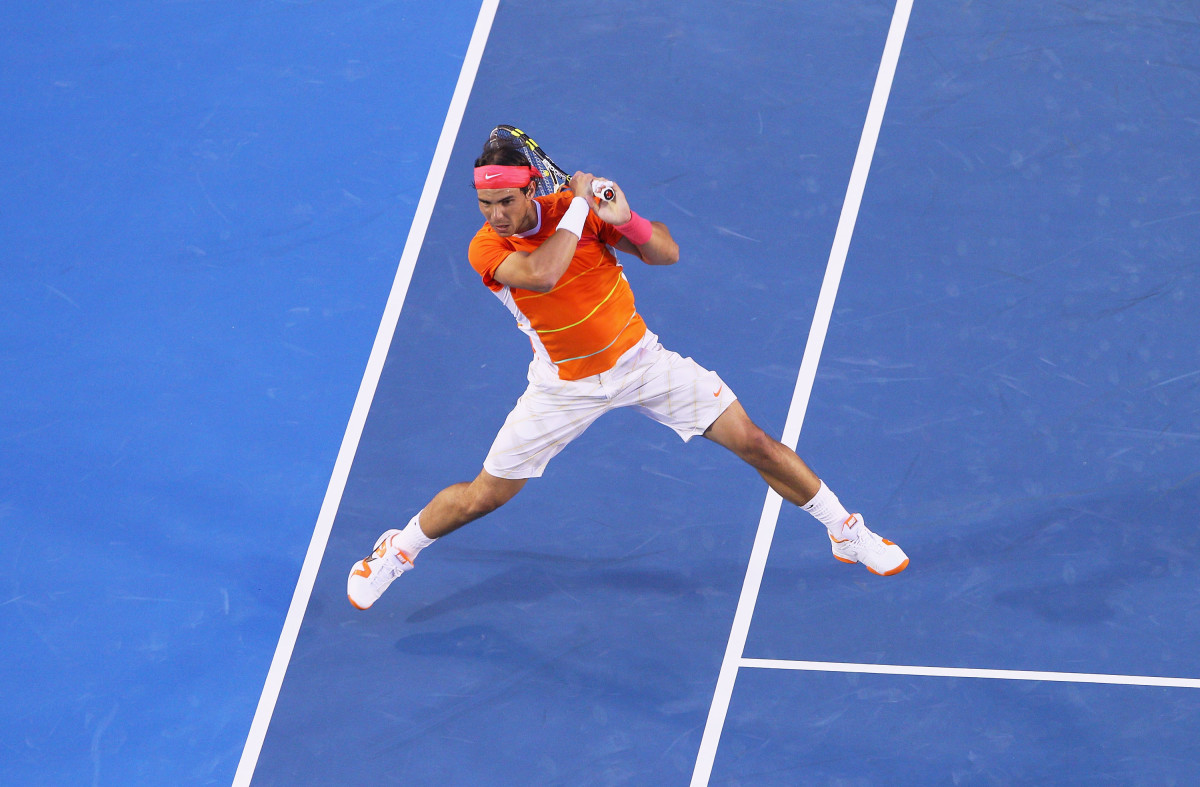
Then again, patterned shorts done right. The subtlety is key.
2010
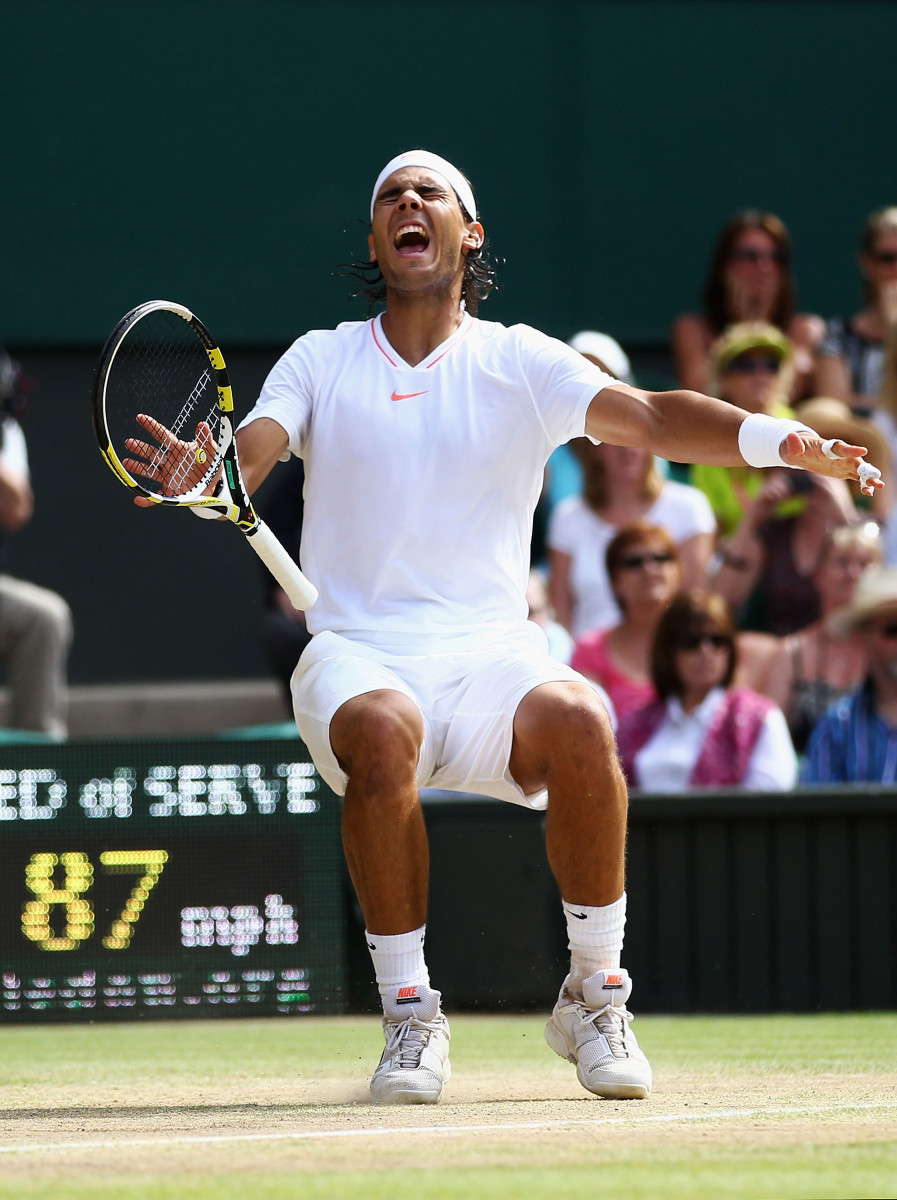
Nadal wins his second Wimbledon title in a v-neck.
2010
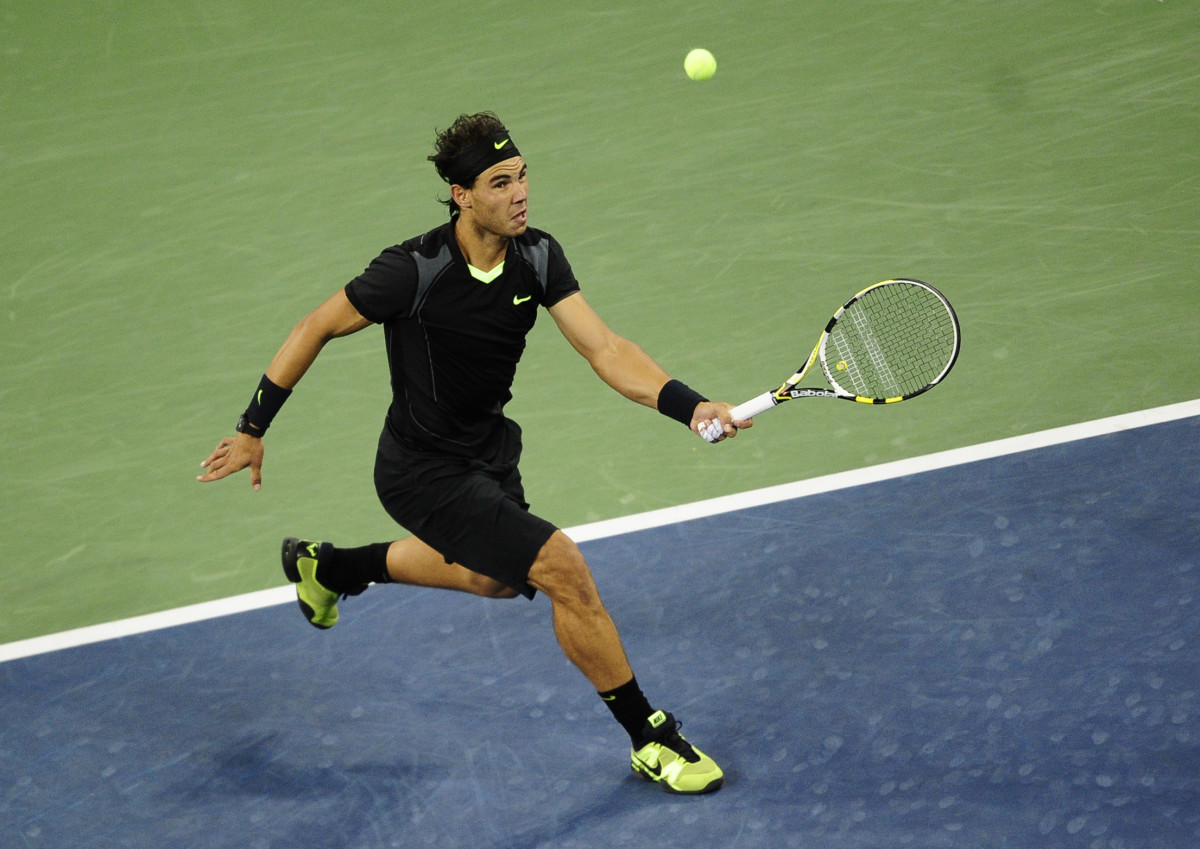
This was 100 percent, hands down the best kit Rafa's ever worn. Darth Nadal was a treat.
2011
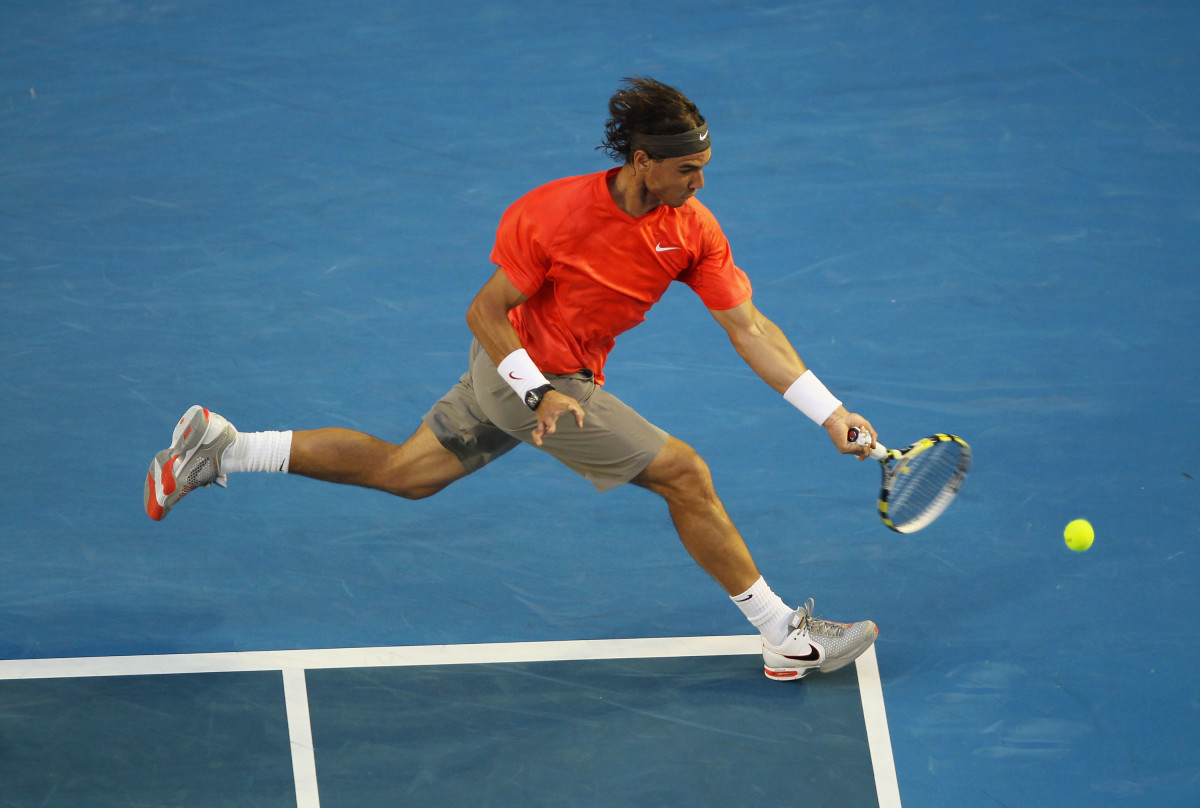
Nadal ended up tearfully losing to David Ferrer in the quarterfinals at this Australian Open, but all we can remember is his distractingly large t-shirt.
2011
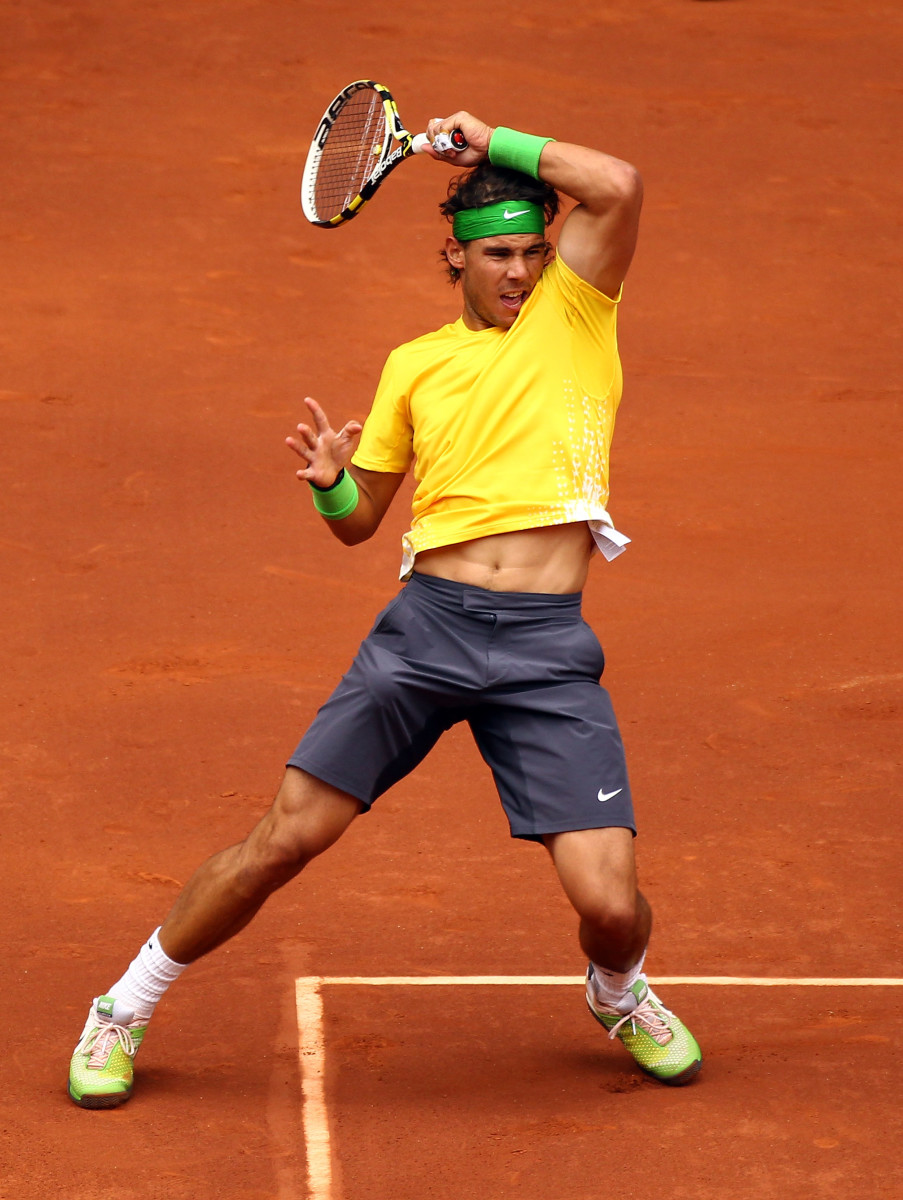
Once again, bright solid colors to the rescue.
2011
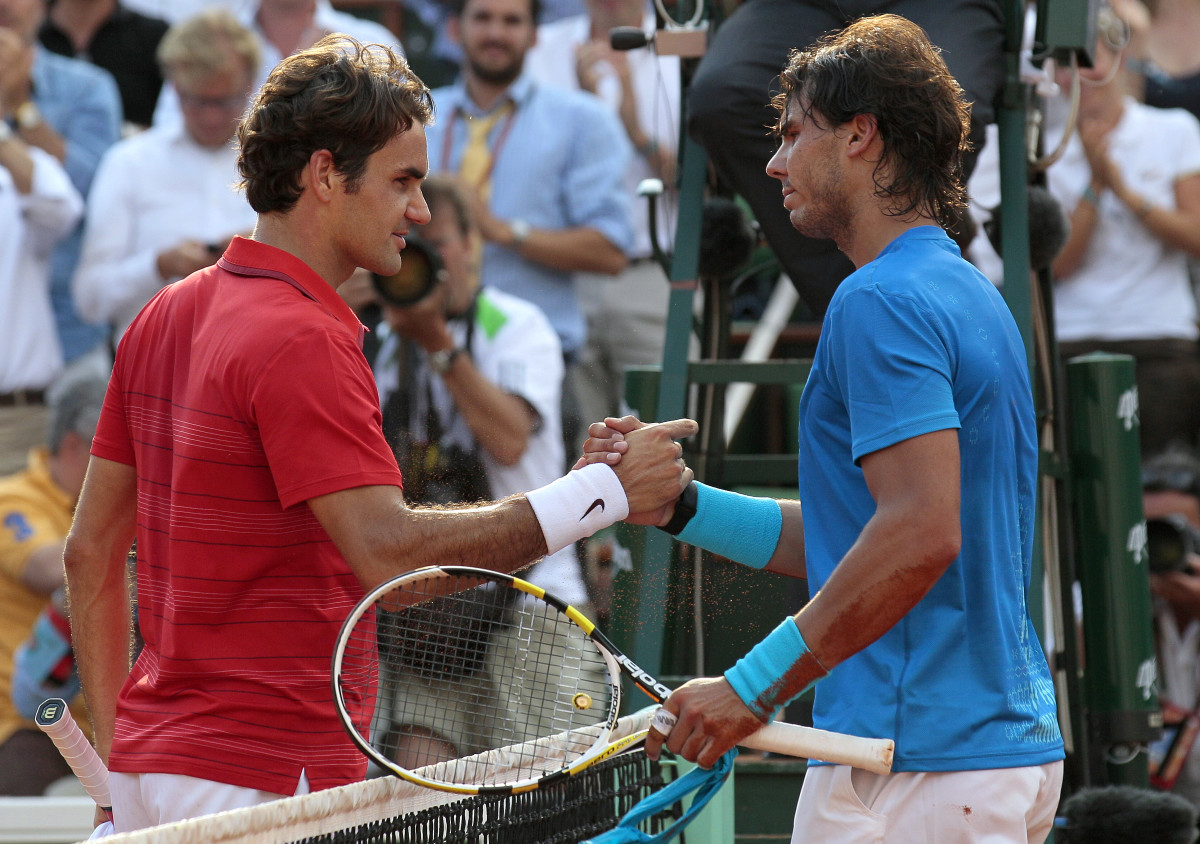
Federer's Red vs. Nadal's Blue at the French Open.
2012
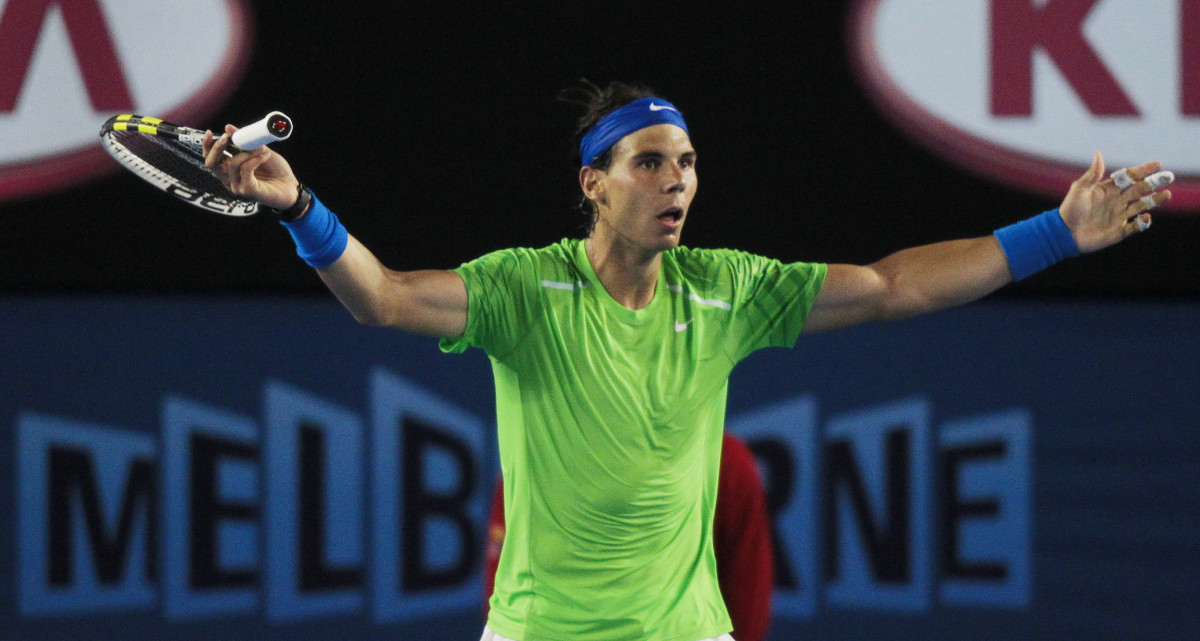
Somewhere along the line Nadal's shirts became much clingier.
2012
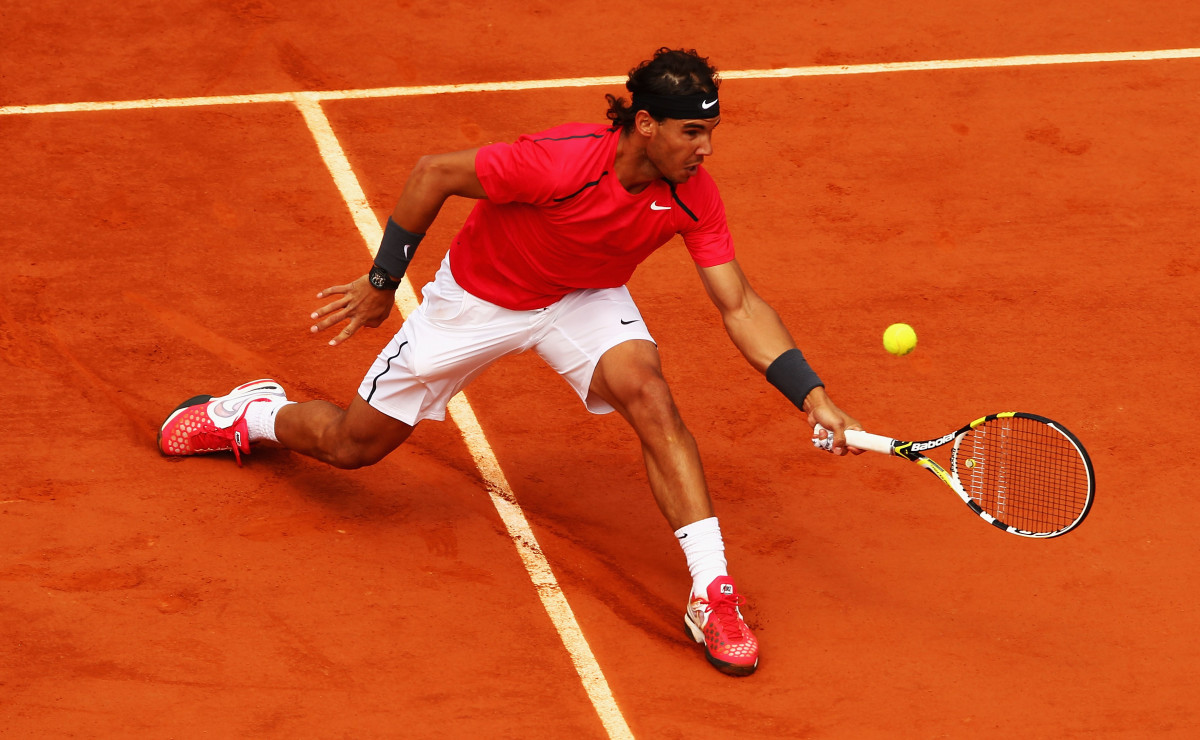
Victory Red.
2013
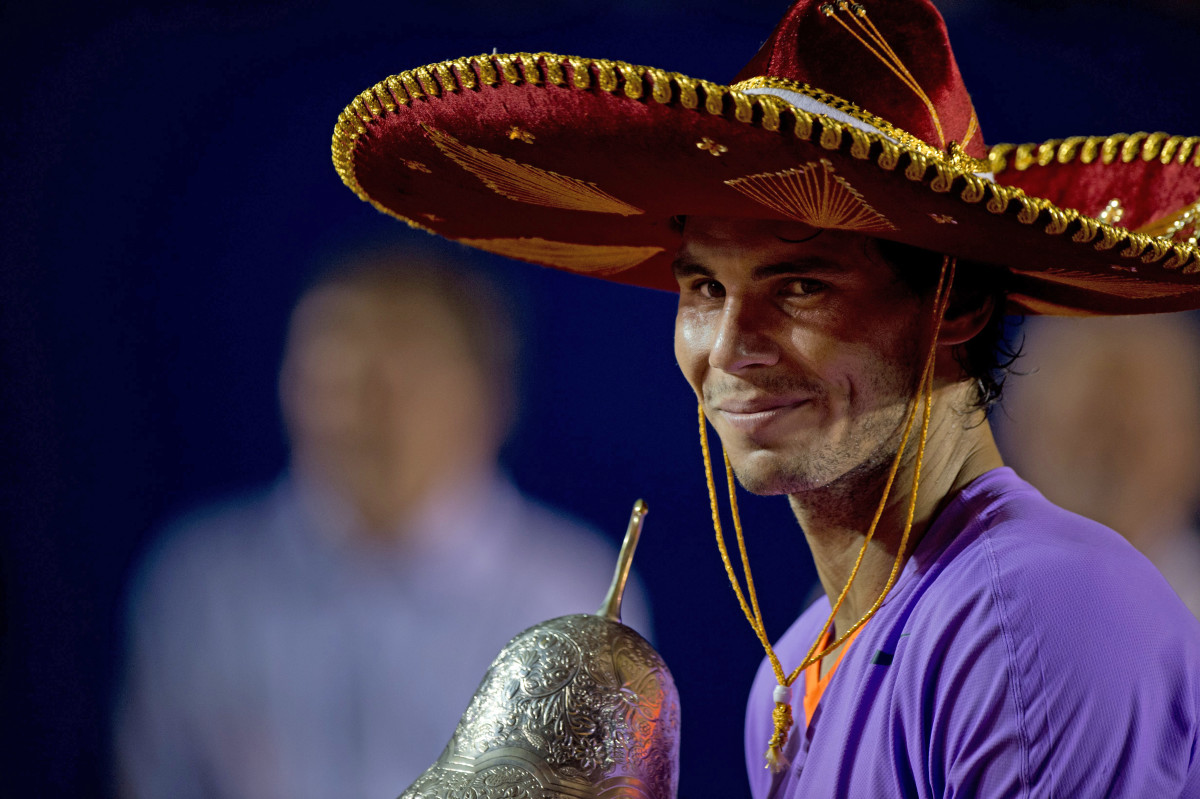
Sadly the sombrero was not a permanent accessory.
2013
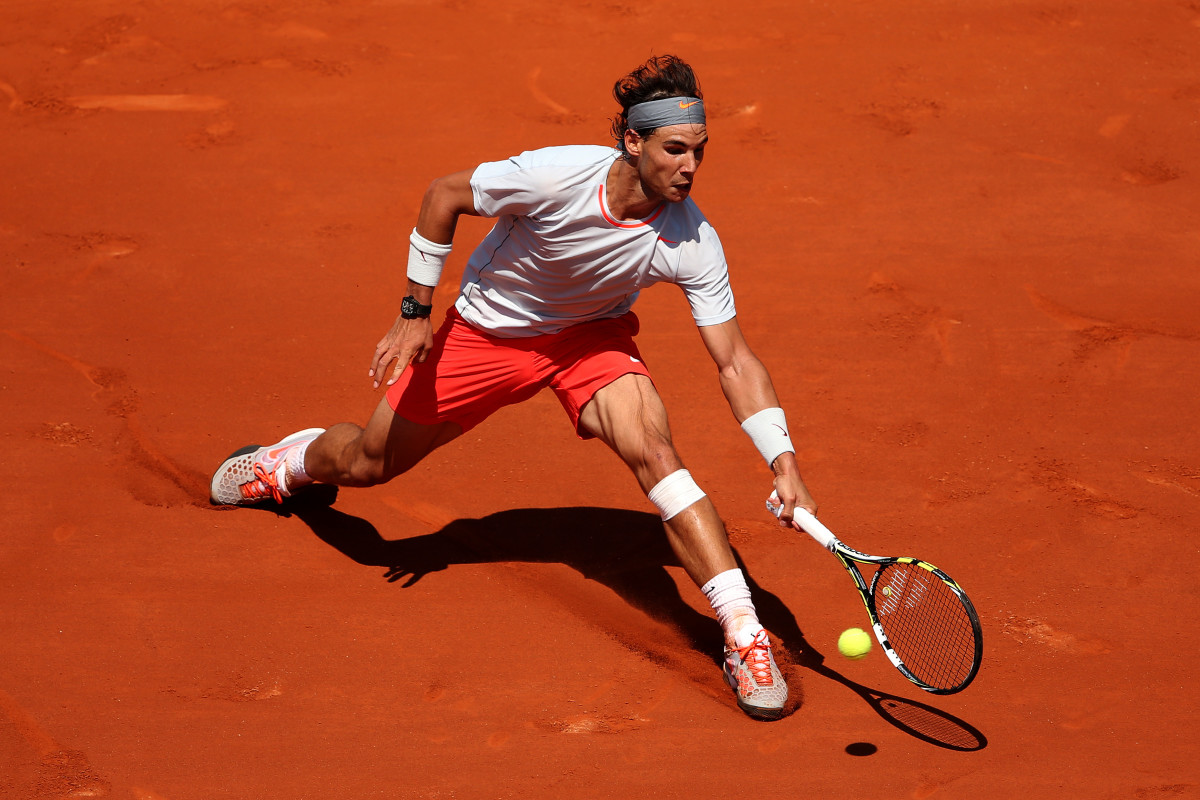
A simple kit for Nadal's eighth French Open title.
2013
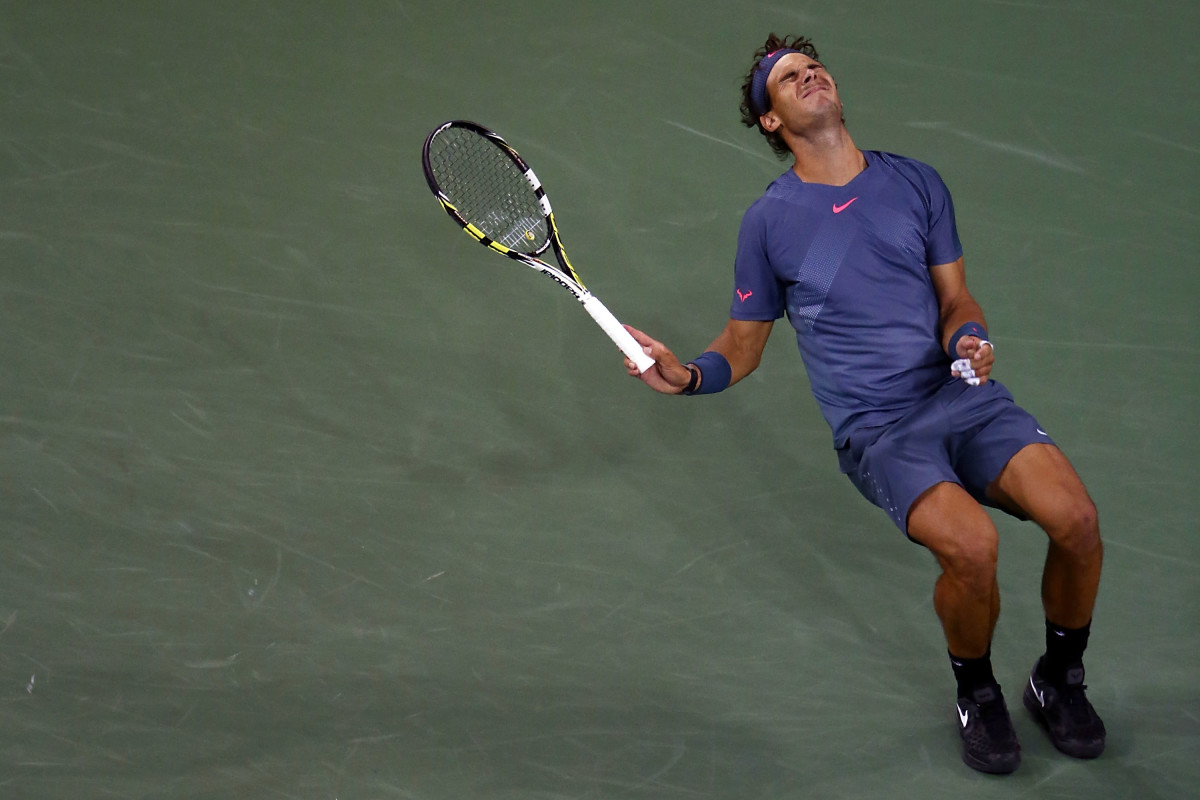
Slate bluish-grey with hot pink accents, Nike once again delivered for Rafa in New York.
2013
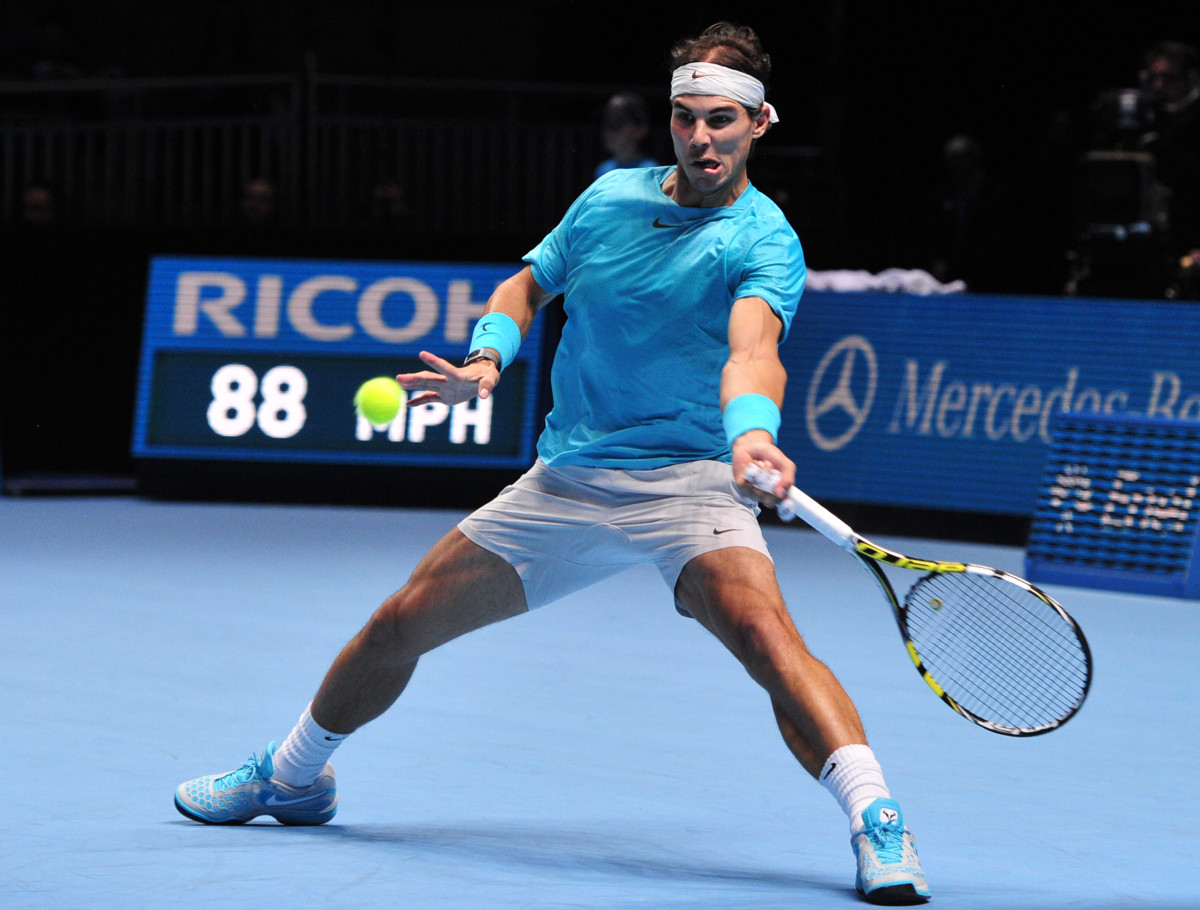
The era of short-shorts begins.
2014
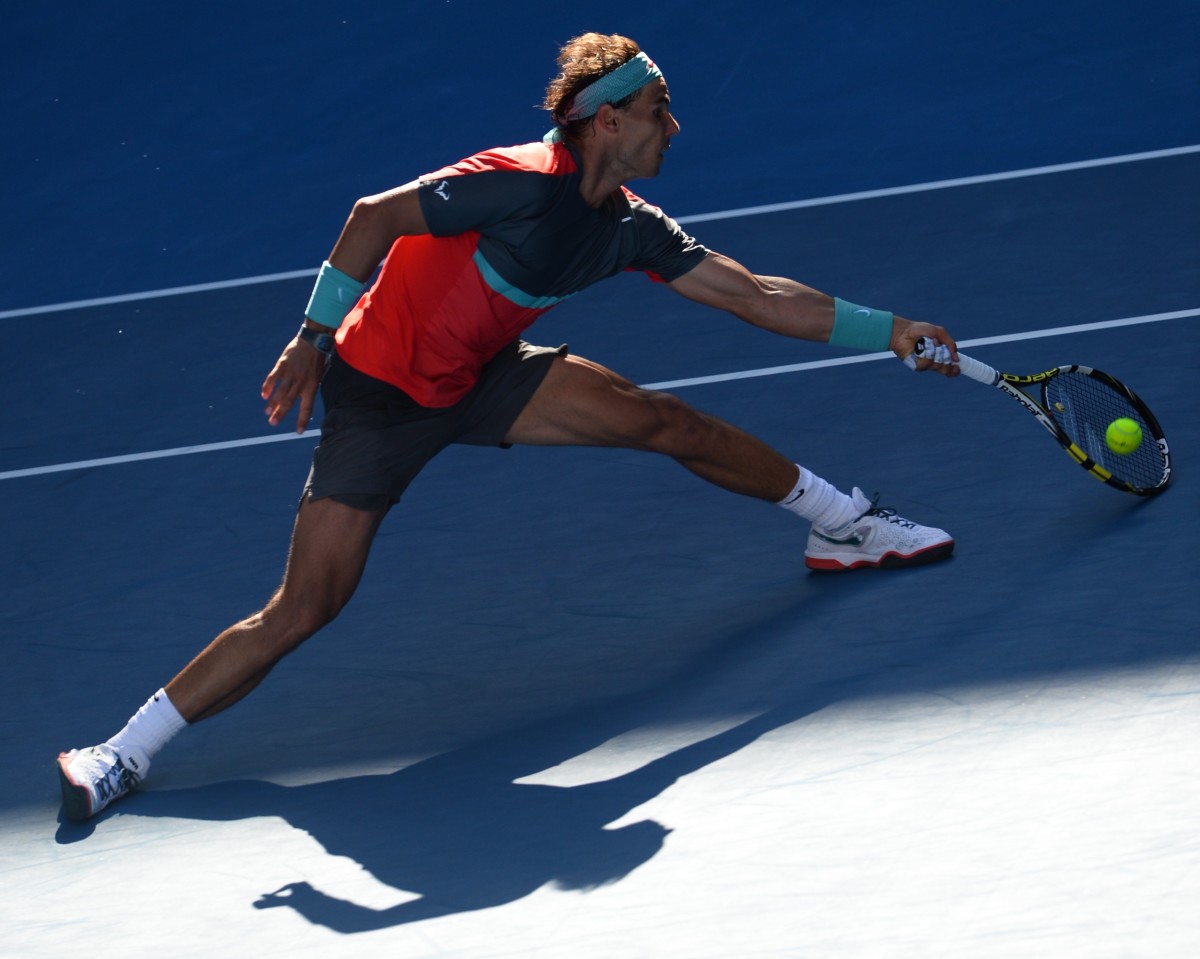
No really, they got really short.
2014
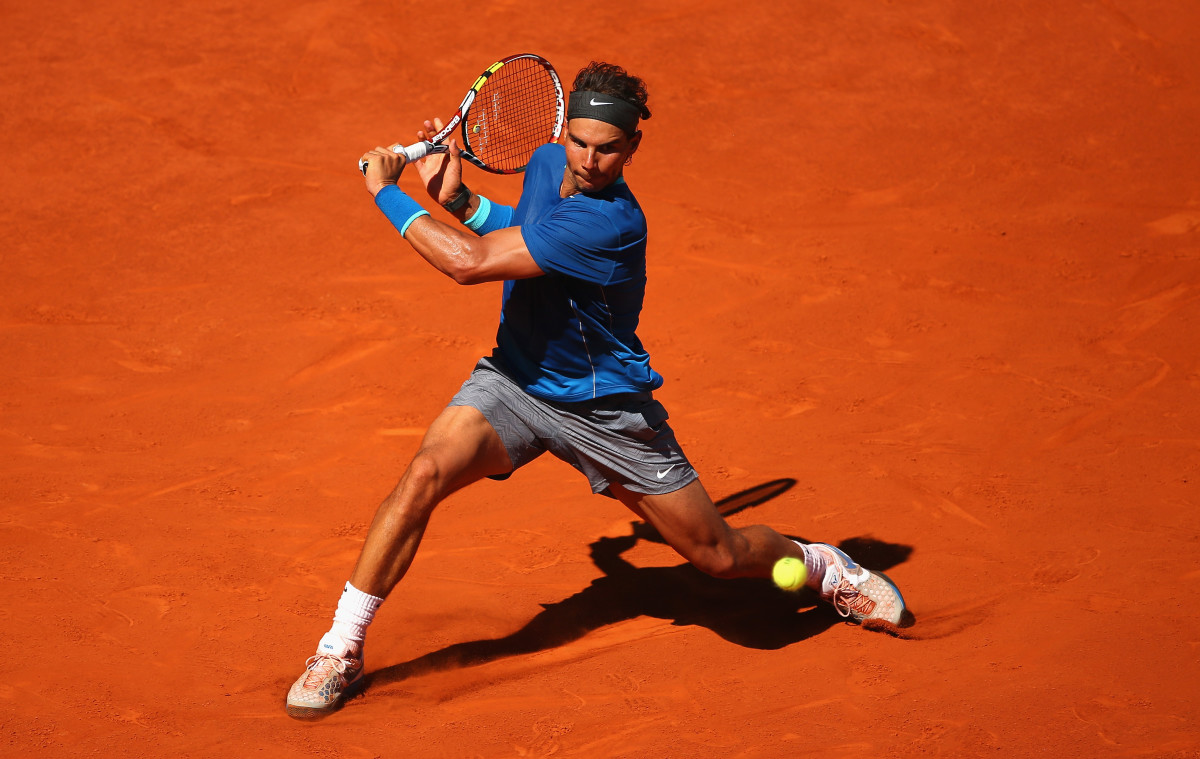
A return to blue in Madrid.
2014
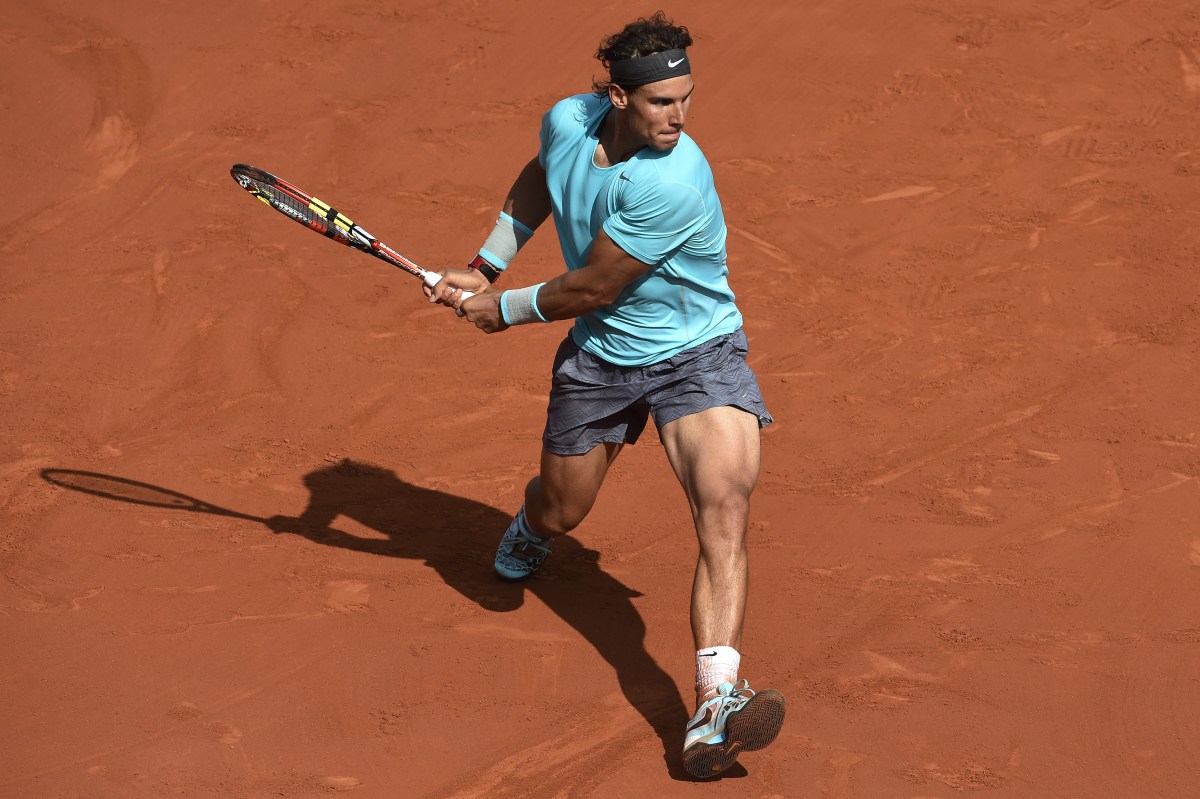
Nadal wins his ninth French Open in gray thigh-bearing shorts. Boxers, essentially.
"So we've got to make sure that we have the right tournaments in the right weeks. That's probably the biggest one. It's not just about throwing money at it. It's about calendar flow. Clearly for players, it can't be costing them money to play the challengers."
• Appointed to the ATP's top spot last November, Kermode spent years as the tournament director for the ATP World Tour Finals in London and the Aegon Championships at Queen's Club. With his experience as a tournament head, it should come as no surprise that he wants to lock in the the ATP calendar for the next four years to give events the lead-time for promotion.
"I just want to provide this period of stability so that we can start looking at the product and what we're going to do long-term, take our time on it," he said. "You need that period of calm. That four years would be good, just so promoters know which weeks they're in, players know where they're going to be, promoters know how much they're going to pay, players know how much they're going to receive."
"There are some calendar issues. The 2016 Olympics causes some real congestion in the summer. But we just have to confront those and produce the best calendar that we can. The calendar is like a pack of cards: you move one piece, the whole thing falls down. It's very complicated. We need to be in a situation where in 2019 we can have a calendar that is the most effective it can be.
• On tennis in China:
"I think sort of tennis in Asia with more challengers, now three categories of ATP World Tour events, 250s, 500s and a 1000 here, demonstrates the demand for tennis here. I think we're just at the beginning. I think it's only going to get bigger and bigger. This event in particular, the Shanghai Masters 1000, this is voted by the players as the best 1000 on the tour, which is a huge honor because players can be quite critical. For them to vote this as their favorite tournament, it's a huge testament to what has been done here."
• On the next step for the development Chinese tennis players:
Asia Tennis Travels Roundtable: What's the state of tennis in China?
"To get to the top of tennis requires such an incredible inner strength and determination that I don't think you can predict where those players are going to come from. What seems to be the common trait is that they have this hunger that you can be born with. But equally I think lots of successful stories are where players are maybe sent out of their country, their regions and learn the game. We have it obviously with Andy Murray going to Barcelona. Nishikori went over to the States. Dimitrov went to the States. It's very tough for the kids to do this. It's brutal. But it does provide that sort of inner desire that comes out later.
"I've seen various countries where the players are supported so well that it's actually too comfortable. They go out on the World Tour, find it quite hard. They come back to their home country, and it's too comfortable. Again, it's the balancing act. It's a bit like the challengers where you have to be hungry enough to get up to the next level. It's the same with development. It's that balance of being able to be financially supported, but you've got to want to get right up there.
"I think if the whole infrastructure is in place, it's a numbers game at the end of the day. Get more people playing, you have a greater chance of finding that special talent."
